 36Likes 36Likes
 |
|

9 Feb 2015
|
|
Gold Member
Veteran HUBBer
|
|
Join Date: Aug 2012
Location: Sunshine Coast, Queensland Australia
Posts: 241
|
|
|
One Year on the Road
Well today (Feb 6) marks one year since I loaded Ziggy onto a plane from Brisbane to LA. Actually once I left work I rode the second half of Australia from Dec 2013 and haven’t stopped since except for Christmas with the family, so that’s gotta count…14mths. Then again I left Brisbane in Nov 2012 to ride around Australia and stopped to work for 11 months, so not sure if that counts. That would be 27 months travelling!!
Whatever, it’s now a long while I’ve been on the road and the year is a milestone I wanted to reach. I had always read that after a year on the road it is like a transition. All your recent memory is now about travel, work is a distant memory and the motorcycle seat feels like the couch you come home to every day. Most nights are in a different place and the motels, hostels and hospedajes start to merge. The list of contacts and facebook friends is burgeoning and the odometer is heading for the ton. Family are watching from afar but life goes on as usual for them until the next SPOT email comes through with the new location. Friends from home remember about you from time to time and send an email asking ‘Where in the world is Paul?’
After a year, the countries you’ve been through roll off your tongue after telling your story daily to the new people you meet. They ask the same questions – how much, how far, how long, how?? But their hospitality and generosity never fails to humble as complete strangers invite you into their home, tell you about their country, state, town, feed you and invite the family around to meet you. It’s celebrity status whether you want it or not. It’s not possible to be a passive observer on this journey because you are the anomaly. You have come into their world on this wild machine with all your belongings stacked high and wide, living a life that is incredulous to hard working, poorly paid locals in developing countries, with no concept of making more money than is required to feed their family that day.
They love motorcycles. They all have them. They can all ride. Their roads are sometimes packed with more motorcycles than cars. They understand that a motorcycle is under 200ccs with a kickstart and chain, something that can be easily manhandled into any position. But what is this 300kg behemoth with a shaft drive and 1200ccs? How can you ride something that big? The looks on the faces, the thumbs up, the stares of wonder and confusion, the excitement of the kids, the fluttering of eyes from young girls that have a dream, the open mouth of drivers swerving into your lane while they stare at you…it puts you in the spotlight.
A year on the road and you reflect on the landscapes, cities, the food, the stomach upsets, the changing faces. Can you have too much of this? Tall mountains still never fail to delight, stunning coastlines still invite you to kick off the boots for a swim, remote landscapes still beckon you to stop and set up the tent, busy cities with their frenetic traffic and markets still never fail to amuse. Find a road with nice bitumen and well engineered bends and it is a dream day. Find a road that becomes a trail and takes you to some unexpected village or view, another dream day. Every new day is an adventure. Every new day brings new people, new places, often new foods, always new friends. Life takes on the wonderment of a young child discovering their world day by day, amazed by the colours and textures of something new.
The routines become obsessive. Roll the clothes, pack the bags and cases with everything in exactly the right place. Tie things down exactly where they belong. Check everything is secure. Check the bike starts. Check tyre pressures. Check the paperwork is in the right pockets, enough cash is on hand for the day. Pants, boots – yes those socks are only on day three – jacket helmet gloves. Check and set the GPS to some vague goal for the day. Same when you stop. Switch off the motor, keys in the same pocket – always – lock the tank bag, gloves in the helmet, sunnies on the head and walk over to a seat at the little roadside fonda for a fresh juice or a coke. Everything back on for the next leg. At the end of the day take the overnight bag into the hotel or unpack the camping gear, secure the loose straps, lock the boxes, cable through the wheel and cover the bike. You know every clip, lock, strap and knot like an old friend.
You are in a close bonded relationship with this machine that is your ship carrying you on an incredible journey. You know the sound of her motor and the minute something is wrong. Two wheels rolling along the world’s roads, tracks and landscapes for hundreds of thousands of kilometres. Feeling every bump – every speed hump – every change of surface, every rock, every pothole, every patch of sand and every slip in the mud. Riding in 40C+ or freezing, you feel every degree. The sun burns your face arms and hands. You put on your cool weather gear and it gets hot. You put on your warm weather gear and it gets cold. The wind blows you around and stabs your eyes with particles of dust and sand. You eat the dust of trucks and choke on clouds of black diesel smoke. The rain can change your day; from a light sprinkle making the oily roads slippery to the miserable downpours that last for hours and you just keep plodding through knowing at the end of the day you can pour the water out of your boots. You change with the weather. You sweat, bake, shiver and drown.
Yet through it all you know what you are doing is special. A dollar for every person that says they are jealous would keep me going for another year. I never stop feeling privileged, grateful, thankful and happy that I have this amazing opportunity. Living the dream. Not just mine but all the people reading about my journey waiting for their turn to fulfil their dream. And that’s important to me too. Paying it forward to the people that will one day get the opportunity to ride their own adventure on two wheels. Sharing the experience, not just keeping it to myself.
Thanks for following, it makes the trip even more special.
PN
|

18 Feb 2015
|
|
Gold Member
Veteran HUBBer
|
|
Join Date: Aug 2012
Location: Sunshine Coast, Queensland Australia
Posts: 241
|
|
|
Honduras - Entry
I always get a bit anxious…not really the right word, maybe strong butterflies…before entering another country. Honduras had long held a bit of wonder for me because it has a bad reputation for being dangerous and besides Copan Ruinas and the island of Utila in the Caribbean, other travellers haven’t had have much good to say about it. Then again they haven’t been to other areas. The second largest city, San Pedro de Sula, has a well advertised reputation as the most dangerous city in the world. 
I’ve only really had two people say anything positive about Honduras and they had travelled to other areas outside the bigger cities. This is the country facing me tomorrow. I’ve done too little research and I’m trying to push out all expectations and take it as I find it.
I read on Horizons Unlimited about a few experiences people had crossing into Honduras, particularly from El Salvador.

Most were stories of it being expensive and questions about the genuineness of the fees. My experience was fine. The process to leave El Salvador was simple with my exit being recorded on the immigration computer in a couple of minutes. Next I spoke to the Aduana (customs) who stamped my paperwork to leave and sent me for a copy of all the documents. Another 15 minutes.
I crossed the border and stopped at the immigration office.


They gave me the balance of the 90 days for the four countries of Guatemala, El Salvador, Honduras and Nicaragua – 37 days. Stamped, I rode the 200 metres to the Aduana office

where the helpful and English speaking officer spent the best part of an hour doing all the paperwork, including me obtaining three copies of everything, before stamping Ziggy in for 90 days. Total cost was 540 Lempira ($27). I had the right amount of Lempiras and I think that made it cheaper because his original figure was around $36, which itself was still cheaper than what I had read. 
I was in Honduras.  Heading north it was already midday and I was enjoying the scenery of a new country. In my mind’s eye I didn’t have a picture of what Honduras would look like and I was pleasantly surprised to see it was green and mountainous.


Not big mountains but fringing the horizon in all directions. Soon the roads gave an indication of how they would be in Honduras. Potholes are commonplace and it pays to watch the road rather than the scenery. The driving manner here is based on avoiding potholes at the expense of the motorcycle coming straight towards you. A new type of riding lesson. 
I followed the only highway north on the western side of the country and stopped at Santa Rosa de Copan. It was a medium sized town and about half way to Copan Ruinas so I had decided to stay there the night. There was a hotel in the centre of town so I pulled in and negotiated the cost to $15 from $20. The owner of Getsemani, Sandra was friendly and helpful. One of her staff did pencil drawings in a notebook that were amazing.

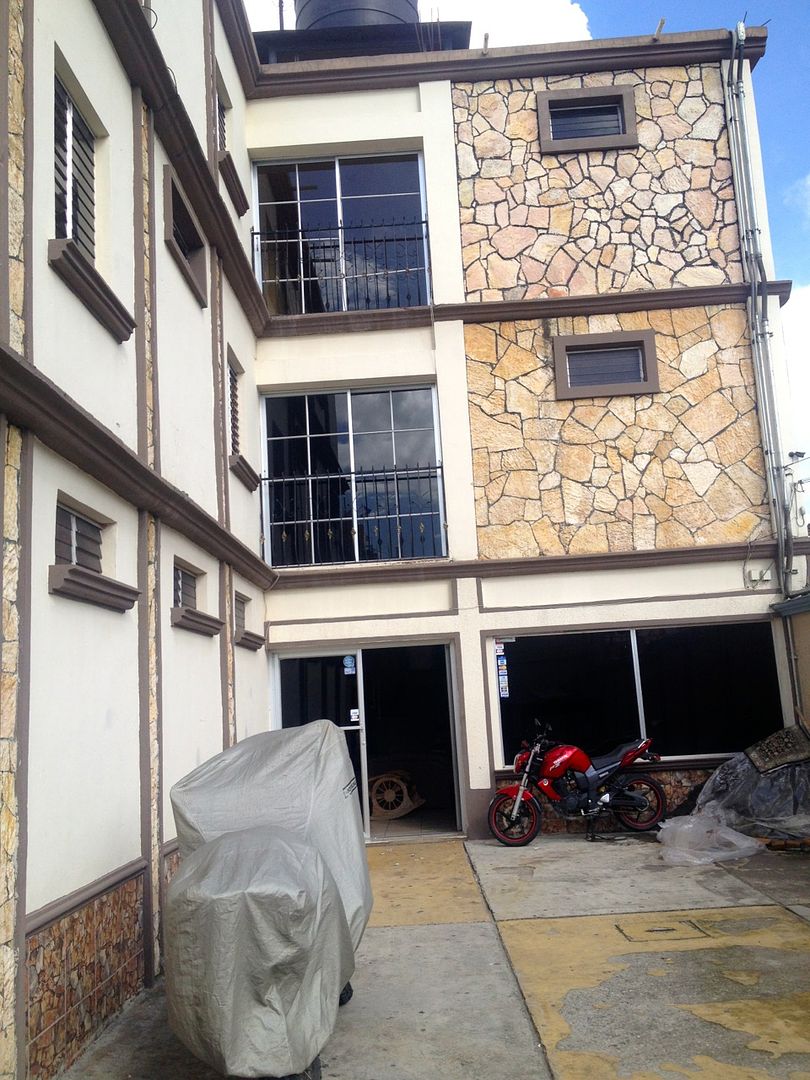

I met another traveller there. Wei is a Chinese woman travelling around the world for three years in her Jeep.


|

18 Feb 2015
|
|
Gold Member
Veteran HUBBer
|
|
Join Date: Aug 2012
Location: Sunshine Coast, Queensland Australia
Posts: 241
|
|
|
Honduras - Copan Ruinas 1
I packed up and rode off in the morning towards Copan Ruinas. It is near the Guatemalen border and I have come the very long way round, having been within two hundred kilometres of this border crossing over a month ago. The potholes became bigger and the traffic was not heavy but one had to stay alert every second. Driving was unpredictable here with some people driving beyond their capabilities on roads not set up for any type of regular speed.


It was not as lush as El Salvador with a lot of land clearing and more cattle in the paddocks. The countryside looked degraded with many weedy looking species growing along the road verge and up into the hills and through the paddocks.
There were no volcanoes here either meaning that the soil was probably older and less productive. Although tropical and green, judging by the size of the crops and other indicators the soil was poorer than in the volcanic countries.

Along the way there was a practice run for the upcoming independence celebrations by groups of school kids




Fireworks are readily available for the young and old
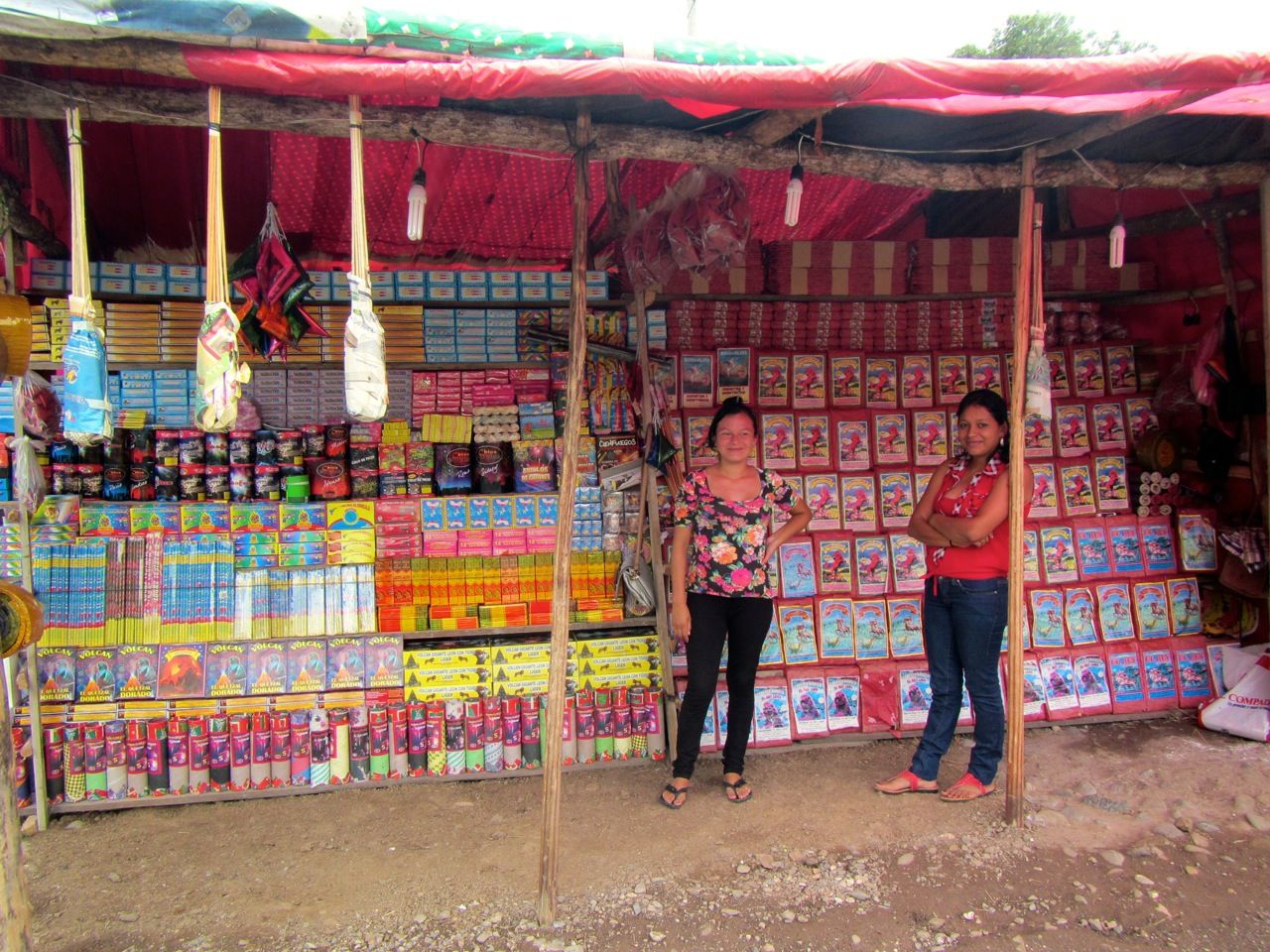

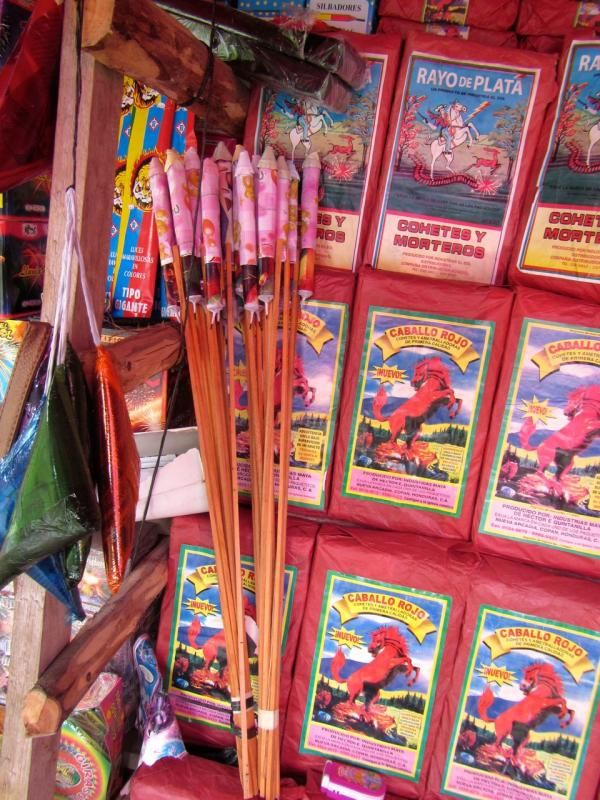

I looked up a hostel in Copan Ruinas and headed for there.

The cobblestoned, steep one way streets were again a challenge on the big bike but after a couple of loop the loops I found the hostel.


It was cheap but not very inviting once inside.
I managed to have secure parking with a challenging driveway and set about walking to the ruins about two kilometres from town.


It’s always nice to go for a walk after riding a few hours and it wasn’t long before I was at the entrance building to the ruins.

It was busy but not too crowded. I followed a group of people ahead of me through the building where there were some offices but no directions about what was required. It was a 300m walk to a fenced off area with a small ticket booth.
‘Do you have your ticket?’ the young girl asked.
‘What ticket is that?’
‘The entry ticket.’
‘How much is it?’
‘I don’t know. You will have to go back to the building and buy one.’
‘Can’t I buy one here?’
‘No.’
I looked back at the 300m walk and just thought this is ridiculous

so about 50m back there was a nature trail with a map showing it went to all the area except the fenced off part. Good enough.

Mosquitos. Lots of them. Stop for five seconds and they are everywhere. I walked for another 100m and the trail ended with a flood. Time to return.

I have to settle for the model.
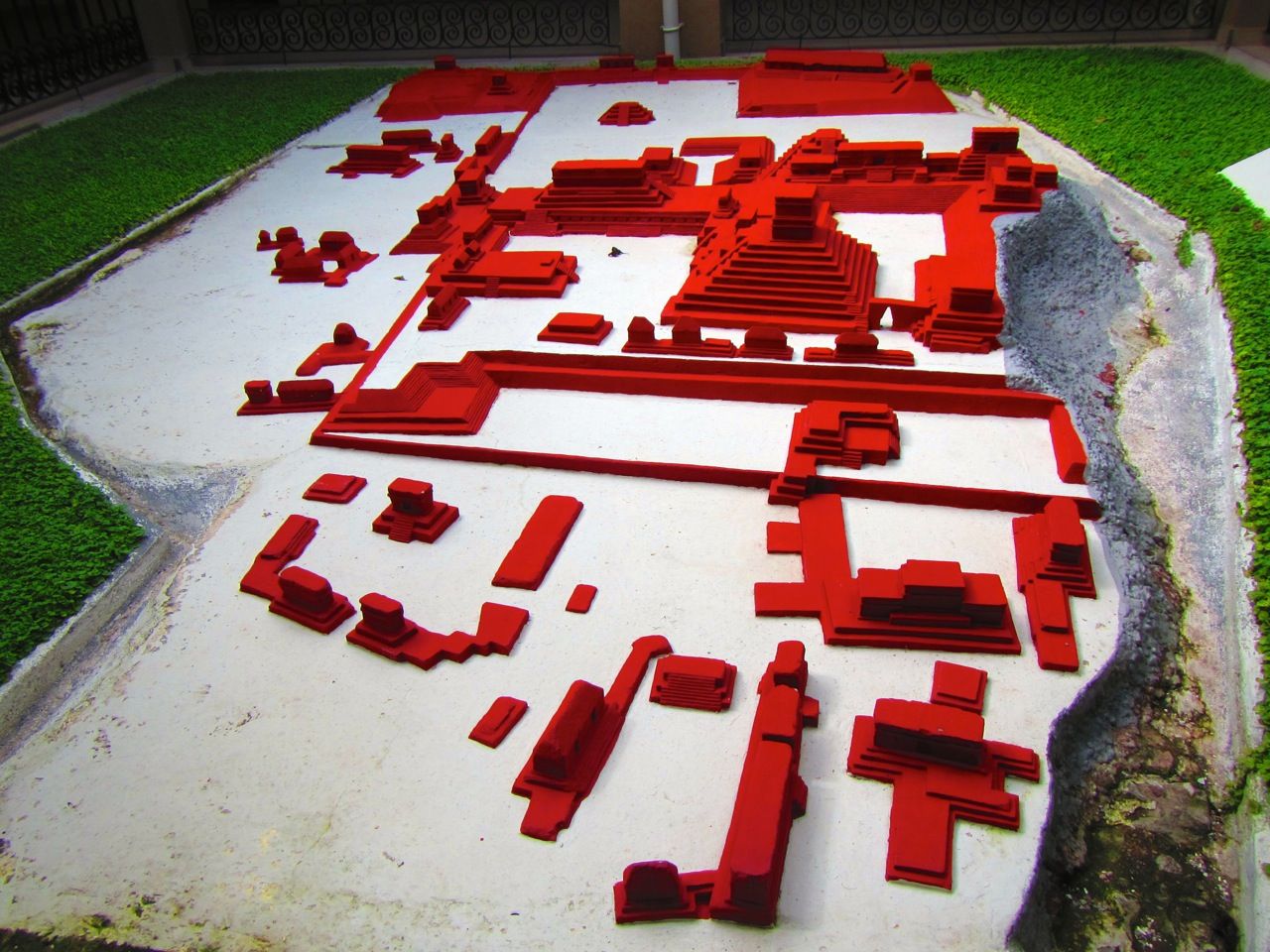
I walked back to the entrance and looked for a moto-taxi that were plentiful when I arrived, but now there were none.
I returned on foot to the hostel and reflected on my visit to the ruins. Not meant to be. I decided to take a shower but the hot water wasn’t working. Hmmm I must have had some bad thoughts about being here!! 
|

18 Feb 2015
|
|
Gold Member
Veteran HUBBer
|
|
Join Date: Aug 2012
Location: Sunshine Coast, Queensland Australia
Posts: 241
|
|
|
Honduras - Copan Ruinas 2
|

18 Feb 2015
|
|
Gold Member
Veteran HUBBer
|
|
Join Date: Aug 2012
Location: Sunshine Coast, Queensland Australia
Posts: 241
|
|
|
Honduras - The Caribbean Coast
|

18 Feb 2015
|
|
Gold Member
Veteran HUBBer
|
|
Join Date: Aug 2012
Location: Sunshine Coast, Queensland Australia
Posts: 241
|
|
|
Honduras - Trujillo
|

18 Feb 2015
|
|
Gold Member
Veteran HUBBer
|
|
Join Date: Aug 2012
Location: Sunshine Coast, Queensland Australia
Posts: 241
|
|
|
Honduras - Towards the Capital
I loaded up and headed to the end of the peninsular at Puerto Castilla which ended up being a secured commercial port but the scenery on the way was stunning, this is the crossing at Jericho.

On the way I found a small waterfront block for sale...
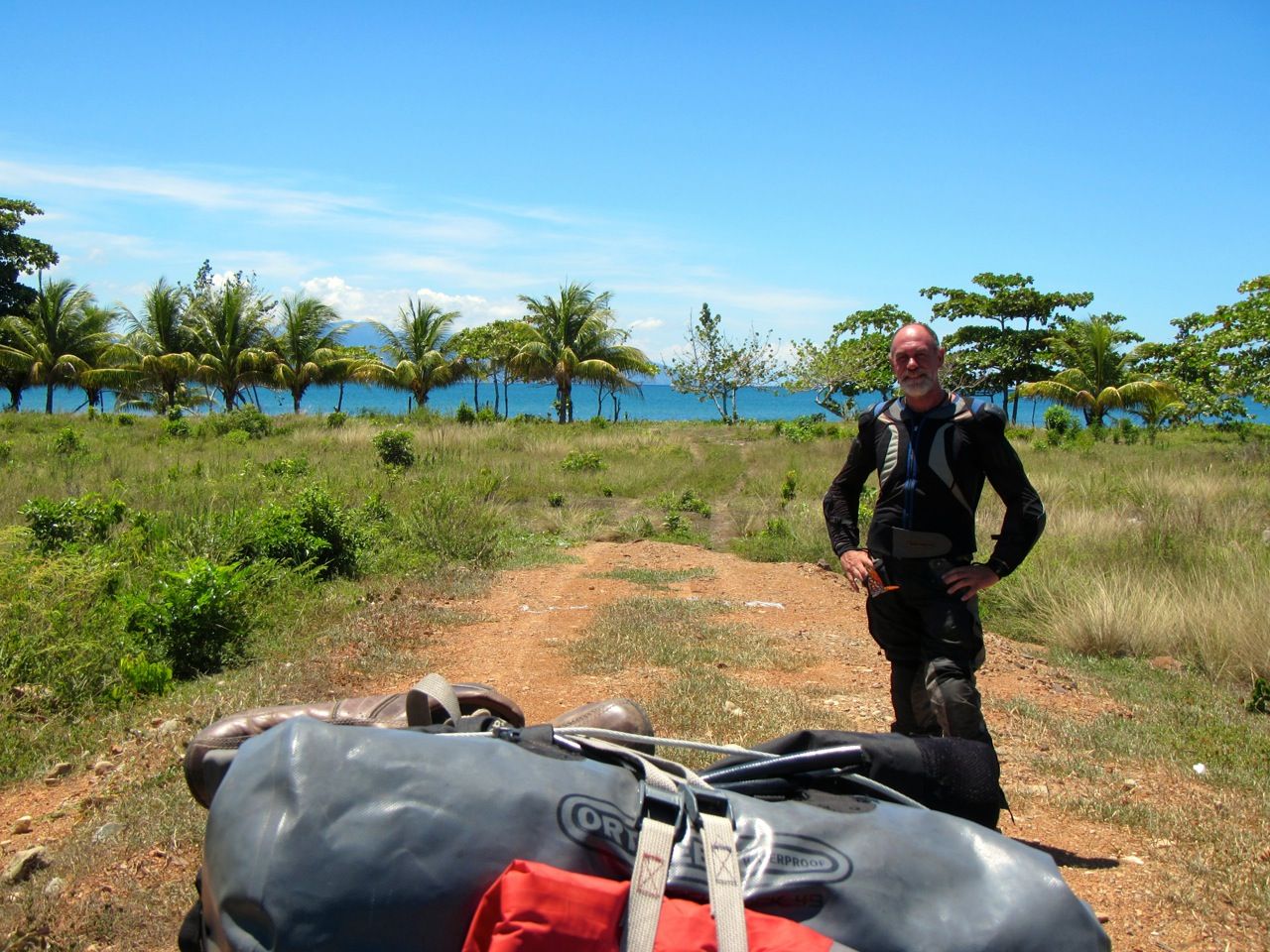

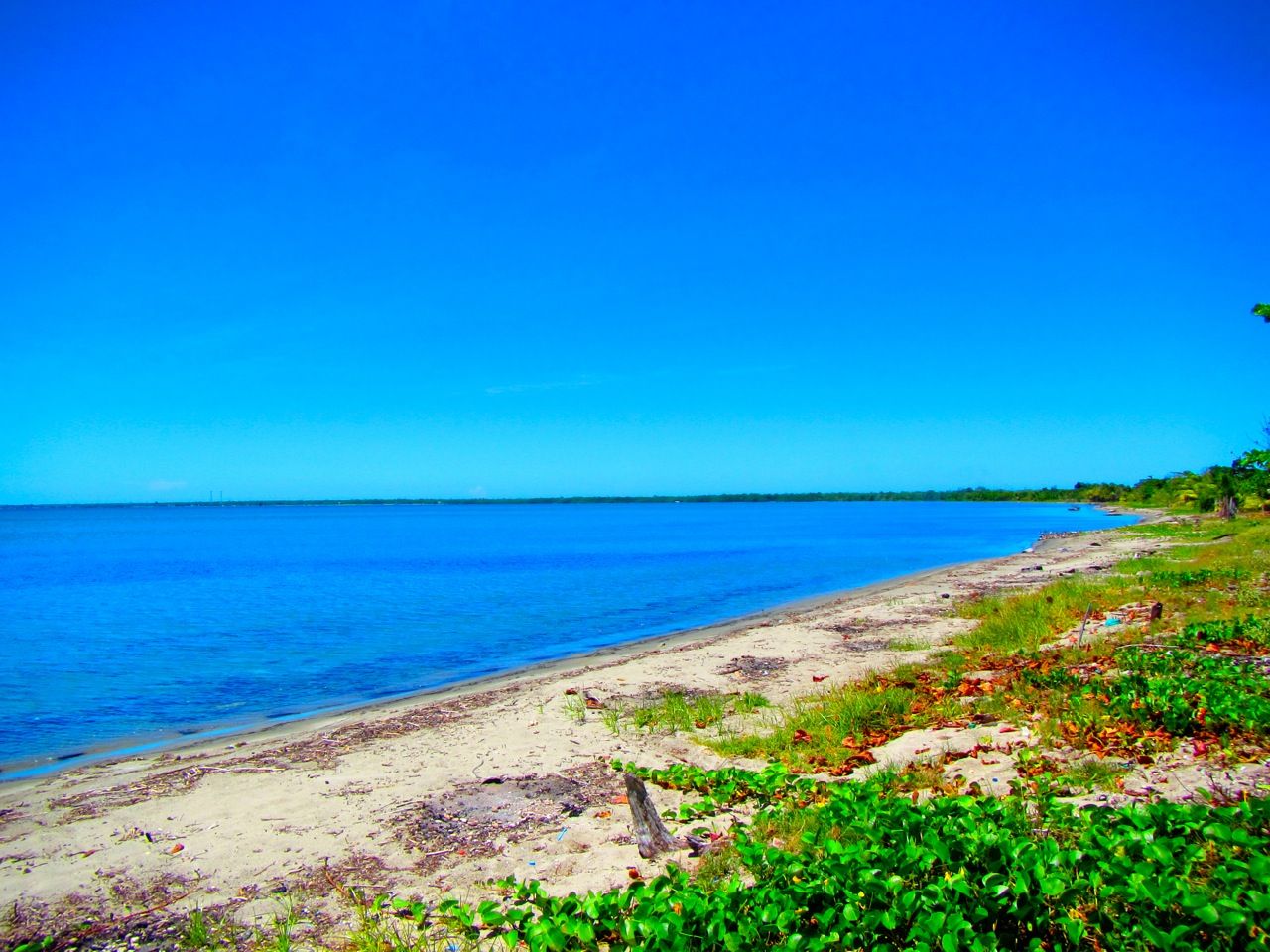
Then stopped in at a small town and met some locals



Heading inland again there were two roads I could take. One had roads that disappeared from my electronic map but were solid lines on the paper map. The other had solid lines on both but took me almost directly to the capital of Tegucigalpa, south of a couple of places I wanted to look at. I decided on the latter easier option. Always sharing the road with interesting things.


After a lunch and fuel stop at Benito Oriental the road turned to gravel.

Then it turned narrow, hilly with some serious ruts and holes. I’m glad I took the good road! I shared the road with some trucks and some cattle.


I spoke to this guy herding the cows and he told me it was 200kms to Juticalpa, my next destination. Oh well, gravel and standing on the pegs it is!

The road continued for 30-40kms like this

over a number of rivers

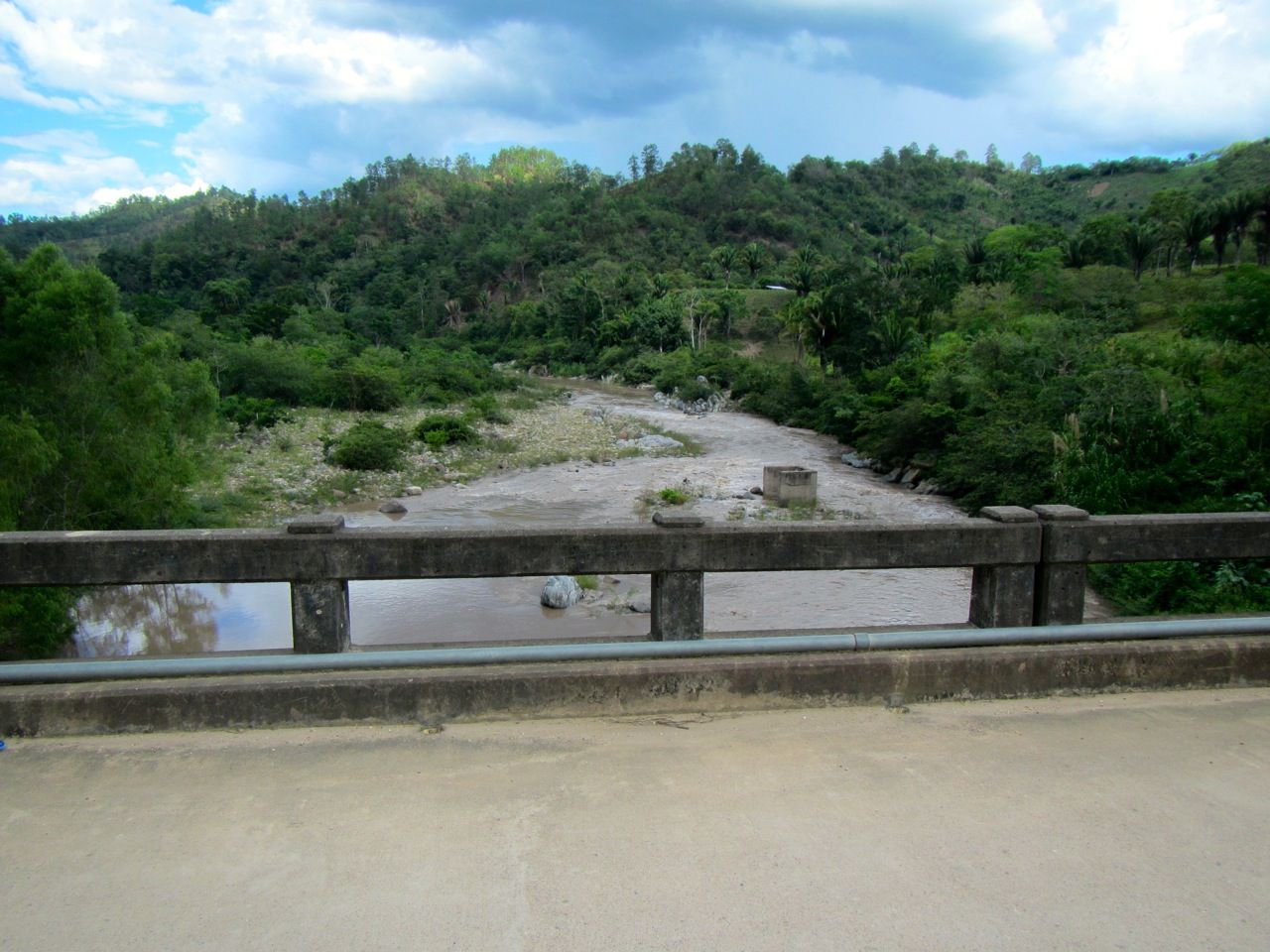
and as I was settled into this type of riding I came over a rise and the bitumen started again.

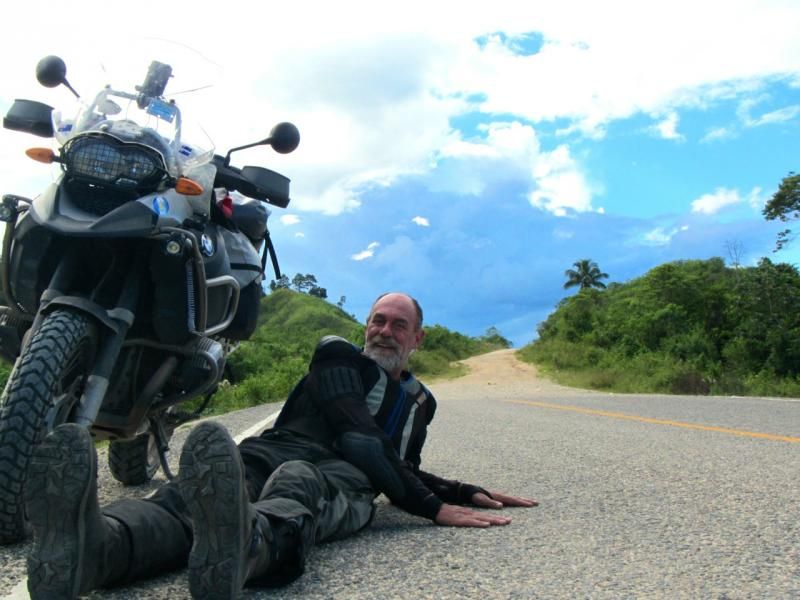
Not only started but it was the newest road in the country. It was built to international standards, wide with lines, guardrails and excellent signage.

It was a beautiful winding road with some straights where I let Ziggy stretch her legs a bit. It was the only road without potholes and so unexpected leaving me to wonder which corrupt politician lived in this area.
It was just on 5pm when I came to San Esteban and a brand new motel.

Jorge is the owner and he only opened a few days ago but still finishing off. He was open to a bit of negotiation for a night so I got a room for $15. The motel was beautifully done. Everything worked, nice hot water shower, large rooms with brand new mattresses and a huge undercover parking area for Ziggy.

For an off the beaten (tourist) track it was a great oasis. A leisurely stroll into the town and I feed on some pupusas and fruit juice and watched the setting up of a huge flea market that will be going for three days over the weekend. Jorge spoke English, having lived in the US for five years and was very interested in the bike and bike travellers. Great spot in Honduras guys! 
The good road continued to the little town of Gualaco then turned again to the old tar,

then broke up into gravel and tar and potholes and the typical back roads of Honduras.


It started a day where I was pulled over five times at road blocks by the police. Yesterday it was three times. On two of the occasions they genuinely wanted to see my papers, one asked for the passport and the other asked for my import permit. One asked me for my new gloves I had bought in Guatemala. The others didn’t ask for anything, but intimated that they wanted a bribe. 
I saw a car pass through quickly after handing some Lempiras to an officer. I refused to pay and refused to play their game. My paperwork is all in order and I don’t want to feed the corruption machine. Suddenly I have no Spanish. I tell them I can’t understand anything they are saying…partly true…then I start on a barrage in English telling them where I am from and about where I’ve travelled so far. I don’t take a breath, just keep telling my story in rapid English, punctuated with smiles, handshakes and the odd bouncing around like a kangaroo to show I’m not from Austria. They tire of this quickly and realise they are not getting any money from me so wave me on.
The police are always very friendly and they approach with a smile and a handshake. They were never threatening or sinister. They never made strong demands or tried to keep me there or keep any of my paperwork. It is just annoying for the third, fourth and fifth times knowing I have to go through my little play. Still, that’s how it is here with the national police. The army on the other hand, was also at a number of separate checkpoints and seeing that I was a tourist, they never stopped me, just waved me on with a polite nod. I preferred this naturally.
The kilometres rolled on through this internal road, passing a number of small and medium sized towns and eventually heading towards the capital Tegucigalpa. I was navigating my way through the city pretty successfully, I came to my last multi-choice junction and turned the incorrect way, immediately followed by two other motorcycles that started flashing their headlights at me. I thought I was getting stopped by the police again so I pulled up and cast my eyes on two loaded up BMW 1200GS motorcycles just like mine. I met Walter and Mario.


These guys were from Venezuela, Mario is actually Colombian, and they had bought their bikes in the USA, visited Canada and were on their way back to Venezuela. They spoke no English so it was a good test for my Spanish. We managed to work out that we were all heading to Nicaragua and had taken the wrong turn so we mounted the grassy verge in the centre and rode onto the correct road. I had companions for the border crossing into Nicaragua.
We rode for a couple more hours to the town of El Paraiso where we found a hotel to rest up before the border crossing.
|

17 Apr 2015
|
|
Gold Member
Veteran HUBBer
|
|
Join Date: Aug 2012
Location: Sunshine Coast, Queensland Australia
Posts: 241
|
|
|
Venezuela
Well I have been missing in action on the HUBB but I haven't been missing out on the action!!!
I am going to jump ahead from Honduras to Venezuela where I rode for 6 weeks in February and March this year, 2015. We hear lots of bad things about Venezuela but my experience was all positive and I have written a 12 part blog of my experience.
Come along on my journey through Venezuela and visit a country that is the road less travelled, but one that I would encourage everyone to visit. It is the cheapest country you will ever visit, fuel is virtually free, hotels and restaurants cost single digits and you will be welcomed, looked after, spoiled and wowed by this beautiful country.
Visit my blog at paulnomad.com - intuitive motorcycle traveller and check it out. I will put the first part of my trip to Mt Roraima next.

|

17 Apr 2015
|
|
Gold Member
Veteran HUBBer
|
|
Join Date: Aug 2012
Location: Sunshine Coast, Queensland Australia
Posts: 241
|
|
|
Venezuela Mt Roraima Part 1
We headed off at around 9am for the hour-long drive in the Toyota Troop Carrier to the small Pemón township of Paraitepui, located along a narrow, potted and rutted dirt road winding up and down hills, higher into the mountains. In the distance Mt Roraima and its sister Mt Kukenan loomed high above the surrounding landscape, the clouds typically hanging on to the summits and creating artistic masterpieces. 
This is the dry season but it can rain every day on the mountain tops so we are prepared for all weather. The road is dusty but the deep ruts and gouged sides are testament to the deluges that frequent here during the wet season, making these roads difficult to impossible to pass.
Paraitepui is a small Pemón village with small mud and stick huts and families going about their business. Women washing clothes, men walking with hand tools or working small patches of land. Many other men had woven, straight-sided cane backpacks that were loaded with food, camping and cooking gear for the numerous concurrent treks into the mountains. These are the porters and they carry 15kg of your gear for 1800 Bolivares. They are short, strong men and women who walk these paths several times a month to provide much needed cash for their families. They are strong, tough and agile, making the struggling tourists look weak and tired in comparison. One porter reportedly was carrying 50kgs on his pack. Most of us were struggling with 10-15kgs.

I was fortunate to have some good gear so my pack was about 8kg plus water, but my only boots were my motorcycle boots, not exactly suited to trekking, more for a half-day walk, so I started in sandals and carried the boots. We had been told to expect cold weather on the top so I also decided to take my warm sleeping bag at a tad over 2kg and my inflatable mattress, which is compact and a little more than half a kilo.
We signed in with our passport numbers and prepared for day one, a 12km walk through the savanna grasses.



The paths were dry and hard with periodic loose rocks followed by paths of larger rocks before becoming parched clay again; passing down across a couple of rivers flowing from the mountains in the distance, before rising again to the hilltops. It was an undulating narrow path, each hill taking us a little higher in total elevation and each peak bringing Roraima and Kukenan larger into our field of view.

They didn’t seem so far away but as the kilometres rolled on they didn’t seem to be getting closer very quickly. The sun was hot when not hiding behind the clouds and this walk sorted out the balance in the backpacks and muscles needed for the remainder of the trek. A number of hours later the now spread-out group reached the first camp where we offloaded our packs and refreshed in the mountain-chilled water nearby.

Our group of porters and guides immediately set about cooking our lunch of rice and chicken and setting up the camp.


We had lots of time to relax and take photos, passing a few hours before our dinner of spaghetti bolognaise and way too strong coffee for that time of night. My strategy of bringing my beloved Exped mattress paid dividends from day one with everyone finding the thin inflatable or dense foam mattresses hard on the tough ground, while I amused the porters and guides with my snozzle-bag inflation device and 7cm thickness of my insulated mat. It was a jovial night with a few rums and  s to wash down the dust and soothe sore feet, muscles and insect bites. So-called Puri-Puri flies bite and leave a red blood spot on the top and several days of intense itchiness. I first encountered them in Socopó where I removed the blood clot on the top to my detriment; this action causes many days of discomfort from my thirty or so bites. Being a new insect to me I have no immunity to them but as time goes on they are less intense and I no longer remove the blood clot, and have become more vigilant about applying insect repellent.
In this land you get tired when the sun goes down and wake at first light. If you look at a watch it is 8.30 to bed and 5am to rise but it’s difficult to judge the actual time.

After breakfast we were briefed about the day ahead. Nine kilometres to the second camp where we will have lunch then set up camp and prepare for the ascent to the mountaintop. It was hard to imagine being on top of the still distant monolith. Day two started with a descent to the river and a crossing over rocks with the flowing white-water splashing around each step. We all made it across without mishap which everyone was pleased about.

Quickly the path became steeper, narrower and more rocky. The dried clay-pan changed to football-sized rocks, sand and ever-increasing inclines. As the sun came out we were baked with every step and this became a much harder day. These were foothills but each appeared like a small mountain as each kilogram of extra weight started to take it’s toll on shoulders, hips, lower backs ad thighs. Kilometre after kilometre became more difficult as the hills became steeper and rockier. Some of the slopes became slippery with small scree-type rocks and the path seemed to go on and on.



A few people walking back the other way would say it was only half an hour more, but they were working with gravity, not against it. Each hilltop promised to be the last, only to be replaced by another higher and steeper path. The sheer 400m walls of Roraima were getting closer with the impossible detail of our ascent become clearer and scarier.
Finally it was the last hilltop and a small inclined rocky path took us to the second camp by a stream, with the horizon completely consumed by the overbearing mountain that was to be day three.



Not the time to think of that now. Today was a hard day and the sore bodies from yesterday were now screaming with burning calf muscles and thighs, chaffed shoulders, sunburnt faces and necks and for some, the dehydration apparent from too little water during the day. My supply of electrolyte sachets found their first victims, including a precautionary one for myself. As if to laugh at us, the first track up from the river was a vertical muddy scar clearly visible amidst the jungle, a vertical smile telling us that if we thought today was hard, tomorrow will be ten times worse. Further up the side of the imposing rock wall was a steep jungled green ‘ramp’ that was the only possible pathway to the summit. The reality would prove to be even more intense than the imagination could conjure. But for now it was time for food, rest, water and comparing aches, as the ever-tough porters cooked and set up camp for us.
The evening was filled with discussion about what lay ahead, what challenged us today and what we would expect to find at the top. Rum was becoming an evening companion as everyone exposed their stash of the brown spirit. A few shots, not too much, just enough to wash away the muscle pain and bring laughter to the journey. Spirits were high but bodies were tired as our dinner was served just after dark, and soon after the chorus of brushing teeth followed by rhythmic breathing became the only sounds to punctuate the dark starry night at the base of Mt Roraima. This was a remote place, accessible only by foot or helicopter, amidst the geologically oldest rock structures on the planet, believed to be in this form for over two billion years. The indigenous Pemón have their stories of Roraima – Rora (blue) i Ma (green) – the stump of a mighty tree that once held all the fruits and tuberous vegetables in the world. Felled by Makunaima, their mythical trickster, the tree crashed to the ground, unleashing a terrible flood. The ancient energy of this unchanged place surrounded us with silence and grandeur as we waited in slumber for first light.

First light revealed the vision that I’m sure was in all our group's dreams, the sheer vertical walls of Roraima, the jungle slope leading to the ramp, and ‘that path’ of red clay rising vertically out of the jungle.
‘Only four kilometres today’, was the word from Roman as he briefed the group over breakfast. It will be difficult and we need to be careful on the slippery rocky areas. There was a feeling of apprehension but excitement in the group and I tried to lighten the mood more by reiterating that it was only four kilometres today. Michael from New York was particularly finding it difficult. He was my ‘tent-mate’ for the trip and yesterday had really taken its toll on him physically and mentally. Today was going to be tougher. I decided to stick around and help push him along mentally, knowing that would also be good for me. The young Venezuelan girls were doing well, the Venezuelan guys also, both young and fit, doing what they could to make it easier for their girls.
|

8 May 2015
|
|
Gold Member
Veteran HUBBer
|
|
Join Date: Aug 2012
Location: Sunshine Coast, Queensland Australia
Posts: 241
|
|
|
Venezuela Mt Roraima Part 2
The path led to a stream then immediately to the orange scar that was dried mud with foot holes cut out of it. Not exactly vertical but not far off, each step pushing us higher up the slope. It only took fifteen minutes to reach the top of the visible scar and peer over the camp that later will seem like a spec in the distance. The first obstacle conquered, the path became slightly less vertical but more rocky and the gravity started to feel heavy in the thighs and calves. It was fortunate that Michael needed some help to keep going which helped also push myself on.
‘Come on Michael. Only ten metres more then there’s a flat spot.’
‘I want to stop here, I’m tired, it’s too hard.’
‘Come on Michael’ came the encouraging voice of Arturo, he and Liliana taking up the rear. Keep going, don’t stop yet, you can do it.’
I kept up the encouragement from the front and we managed to push Michael, and ourselves, to reach a good 100metres each stage before stopping and catching out breath. The jungle closed in; towering wet tropical rainforest, accustomed to being enshrined in low cloud, today reaching up to a blue and sunny sky. The gnarly root systems entwined with the rocks, threatening to twist and ankle at every step.
‘Ten metres more Michael.’
‘You told me that before, several times and I’m still waiting for the flat spot!’
‘Just ahead Michael, just another 10 metres.’
The halfway mark was a large rock at the base of the towering 300m bare rockface and we were told it was two hours to there and two hours from there to the top.

In the last assault towards the rock I pulled ahead of the rest of my small group, feeling a bit dragged down by Michael’s pace and wanting to catch up with the stragglers from the rest of the group who left a few minutes before us. I reached the rock and found Antoine and Nausicaa finishing their rest before continuing on. I waited six or seven minutes for Michael and Arturo and by the time they arrived I was ready to move on. People from another group and some of the porters also arrived so I knew there was plenty of company for Michael, and I forged on. Downhill first for a bit clambering down large rocks but on a well worn path that was easy to follow. Soon ascending again, the rocky path hugged the immense cliff face above, surrounded by thinner jungle and a hotter sun.

The path came to another peak then down again into a small valley that led to the final assault. In the distance I could see tiny figures at various spots on the shaley ascent, passing through the waterfall that once seemed so distant, was now part of the path. I climbed down to the base of the ascent and started the careful step by step climb over rocks that were wet but not slippery, some loose and some solid, passing under the chilly water of the misty waterfall and letting the fresh liquid wash away the sweat and drench my shirt from the outside. It was all about focus, one step at a time, pushing aside my fear of heights as I climbed ever upward towards the top of the path, the top of the ramp, the top of Mt Roraima.


The last push, void of trees, exposed to the hot sun, clambering over billion year old rocks, the body and mind focused on one thing and one thing only…reaching the top; and suddenly there it was!
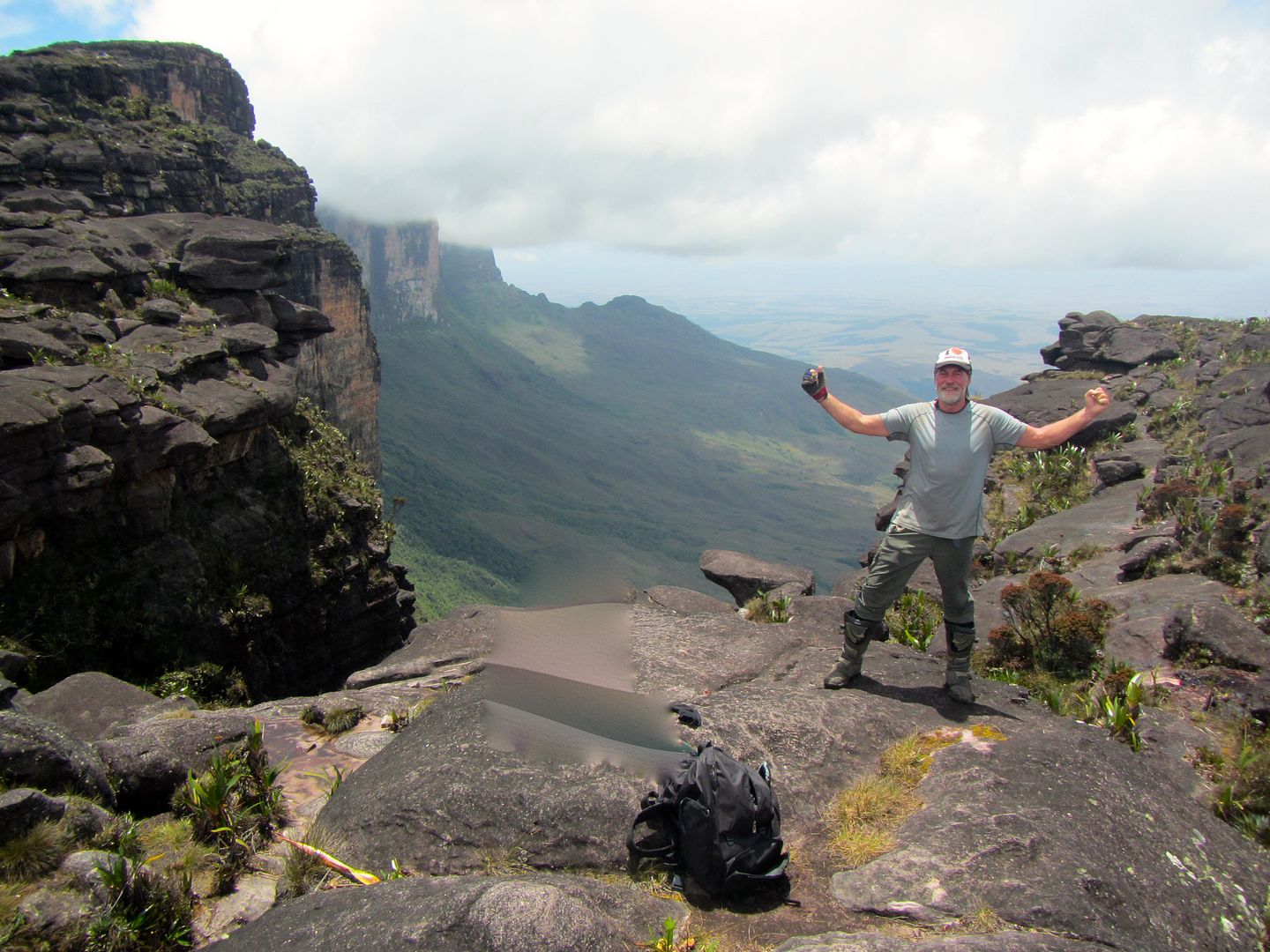
The large black boulders and cliff edges with wind weathered shapes like animal faces sitting teetering in impossible places standing as sentinels to the plains now so far below.

Step by step the scene below had fallen further away and now some three or four hundred metres below was the second camp, a collective of dots, and stretching into the immense distance was a small narrow winding path leading back to the little basecamp village.


We could take time to enjoy the views from here as we waited for the last of our group, all of us buoyed by the magnificent views surrounding us.

Once all together and having lots of photos we walked to our cave that was to be home for the next two nights. A tall overhang facing the opposite direction to the travel of the ever-changing weather was assured to keep us dry.

The half hour walk took us through a new land, a black landscape peppered with small and large ponds, little clumps of green each a micro garden of a dozen species of ancient plants, insectivorous, ferns, basic daisies, lichens and mosses.


The occasional tiny orchid in yellow, red or orange, each little patch a complete world, a functioning ecosystem, a colony of codependent plants symbiotically surviving this harsh, wet environment, probably unchanged for millions of years.
The keen eye of Antoine picking up an ancient frog species that hadn't yet evolved enough to jump.
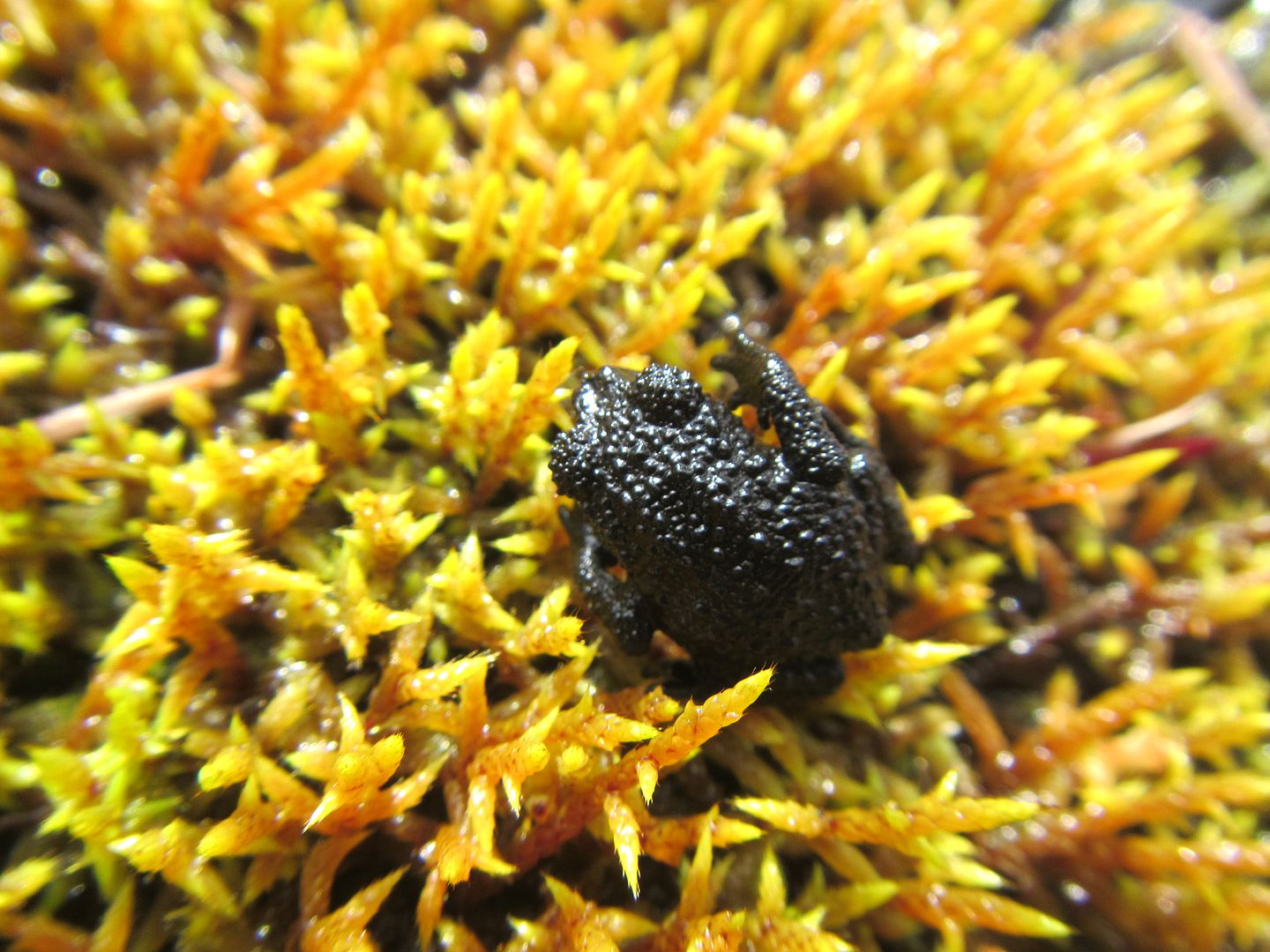
The black rocky outcrops, the moonscape, this was The Lost World made famous by the book of the same name in the 1930s, inspired by what lay before our eyes now.


As we arrived at the camp, in usual fashion we tourists collapsed against the rock using our packs as cushions while Roman, Selma and the porters carried over pots of water, started the large copper kerosene burners and commenced the cooking duties.
A couple of others arrived with the tents and started erecting them in the narrow sandy space in front of the shelter, but the ground was not flat and with the thin mattresses several sleepless nights were assured for most. Almost arrogantly I visualized my 7cm mattress and new warm sleeping bag and dared not speak too loudly about how comfortable I would be for two nights.
The cloud moved in quickly, driven from the northwest and quickly enveloping the whole mountain top; the scene before our eyes, everything beyond the immediate bushes was shrouded in mist. The temperature dropped by a good five or six degrees and the wind chilled us as it pushed the grey mass of water vapour rapidly across the ancient surface.

We suddenly had a sense of the cold we were to expect during the night and this became the point of discussion. After a while the temperature started to rise and as if by the sweep of a magician’s cape, the cloud disappeared and the sun shone again, its white and yellow rays glistening rainbows in the pools as it started sinking in the west.

We all wandered off in various groups to discover more intimately the new world that we had become part of, the old world that has stood unchanged through a thousand generations of men, mountains that saw dinosaurs come and go, stood silently as the Andes rose from the plains to the west, from a time when Gondwanaland was still intact.

The meals had become a little more basic as the fresh meat was used up but still we dined on stew and rice tonight with the guides and porters not eating until we had finished our first and second helpings if we desired. They started with a well received brew of hot chocolate. The dark had descended and the warm jackets, beanies and thick socks appeared from the packs. It was a tired group tonight after three days of physical exertion but no one…well maybe one…looking forward to the thin mattresses and inadequately rated sleeping bags on the undulating rocks in the evening chill. The expected was realised as everyone the next morning was groaning about sore backs, uncomfortable curves, dips and stones shaping the sleep of the bodies. I slept well on my trusty Exped and actually became too hot during the night and had to open my bag up to cool down. This is the bag I want for Patagonia!!
Our day consisted of a four hour walk around the sights at this end of the plateau. The window and its adjacent rocks jutting out into space over a seemingly bottomless cavern.


The cloud had different ideas about our photo opportunities, moving in quickly to obscure latter attempts.

Cliff edges, the so-called Jacuzzi, a string of jade-green coloured pools where we swam; the crystal gardens and numerous other features.

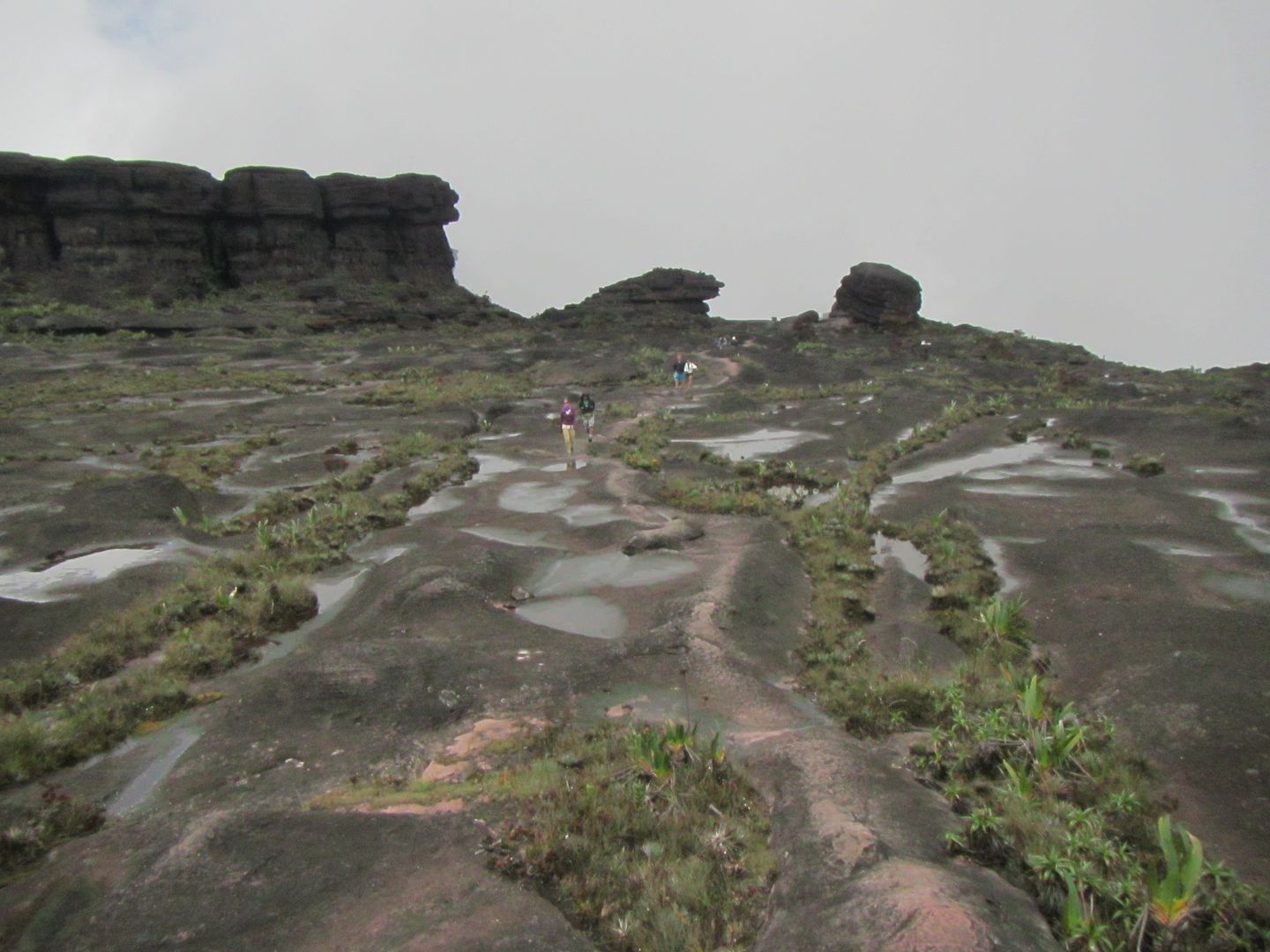
We covered some distance to see the changing landscape but the constant black rock, small pools and bizarre wind-formed outcrops dominated.

It was a fun day with three of the group opting for the much farther walk to the Triple Point, where the countries of Argentina, Guyana and Brazil met at their lofty peak. We had plenty of time just to look and take in the wonder of this place. Dinner was an uninspiring rice with warm milk followed by another rough night for some and a simple oatmeal breakfast, not an ideal preparation for the descent. Our time here was up.
Despite the cloud moving in and out we had very little rain and mostly clear views and as if scripted, before we started the descent we were taken to another lookout point to see the majesty of the walls, the distant undulating view shimmering under a perfectly blue sky.

We followed the same path down. The lack of rain had dried up the misty waterfall and the loose shaley stones were mostly dry. Although every step required utmost concentration and there was no illusion about the difficulty of the descent, this time we had gravity on our side.
The steep loose part was quickly covered and the rocky path started as the narrow track found its way first into the canopy and then into the thicker jungle. Motorcycle boots were not the best option for this but it was more effective than my sandals and easier than carrying them. If I brought them all this way I was going to wear them! However another critical thing is to make sure your toenails are trimmed. Although not long, I had a longish end to my left big toe nail and I remember the exact step where my foot slid forward in my boot and pushed the nail hard into my toe. This was gonna hurt!

The four hour ascent became a two hour descent and we were back at second camp for lunch. Because it was faster we also had to complete the nine kilometres back to the first camp. I took off my boot and my worst suspicions were confirmed. My nail was already becoming black from the blood underneath. I was going to lost the nail. The nine kilometres was agony as I kicked the odd rock and slid my foot several times to the front of the boot again, putting more pressure on the toe. The hot, troubled faces of the new groups approaching second camp, left me with just a smile and a wave, knowing that if today was hard for them, tomorrow would be another challenge. Slowly we picked our way along the narrow rocky path, going ever down but at times steeper than others and the forgotten ravines and small river crossings leaving a steep uphill bank on the other side.
By 4pm the last of us struggled in, I was with Antoine and Nausica and Michael. Michael was on the point of exhaustion, my toe and general muscle soreness was getting the better of me and Antoine’s heels had a nice collection of torn blisters.


We hobbled in to the cheers of the rest of the group. A final meal and a final night in the tents, a large moon illuminating Roraima, now deep in the distance and not looking so large, marked the nearing of the end of the journey.
In bed soon after dark and up at first light, I found myself a new walking partner from another group, Keiko from Japan, a four-year travel veteran in her forty eighth country. We had a similar pace and lots to talk about so we walked out the twelve kilometres together, before farewelling at basecamp. She is heading north to Central America.

Our group all came in and soon after we bundled into the two 4wds and were driven back to a little town in the Gran Sabana where I had stopped for lunch a week ago.
We were delivered back to respective accommodations and some of us met up for pizza and  s later that night. I returned to my hostel just out of town, Los Pinos, and that was it. My adventure to Roraima all but over. Severe muscle soreness and a throbbing toe stark reminders every time I tried to walk.
|

8 May 2015
|
|
Gold Member
Veteran HUBBer
|
|
Join Date: Aug 2012
Location: Sunshine Coast, Queensland Australia
Posts: 241
|
|
|
A taste of Venezuela
Climbing Mt Roraima was the last thing I did in Venezuela but I have another 10 posts of the 3000kms I rode across this amazing country. Look it up on my blog at paulnomad.com - intuitive motorcycle traveller or wait three months before I get around to posting the rest on here. 
In the meantime, I'll stretch my memory and poor Hubbing back to the rest of Central America where there were plenty more adventures in Nicaragua and Costa Rica. Going back a bit in time now...
|

8 May 2015
|
|
Gold Member
Veteran HUBBer
|
|
Join Date: Aug 2012
Location: Sunshine Coast, Queensland Australia
Posts: 241
|
|
|
Nicaragua - Entry and Las Penitas
The border crossing wasn’t the shortest but there were no problems. Exiting a country as usual is faster and with my two Spanish speaking friends it was made a bit simpler. We arrived at the border town of Los Pollos via Choluteca around 9.30am and were through by just after 10am. Our main hold up in Nicaragua was other people being there at the same time and not enough staff to do all the paperwork. The immigration took a long while and I think it complicated things having three nationalities on the bikes and the other two bikes being US registered. They did our passports together and it took some time and discussion.



Eventually we were through just before midday and after a slight mishap with Walter’s bike being knocked over by a car, things went smoothly and we were on our way.

We put in a full afternoon of riding to get to Leon, stopping occasionally to get directions.

I would have preferred to hang around in the north-west part of the country for longer and ride slower, but I only had this day to spend with the other guys and they were on a mission to return to Venezuela. It is the way riding with other people.
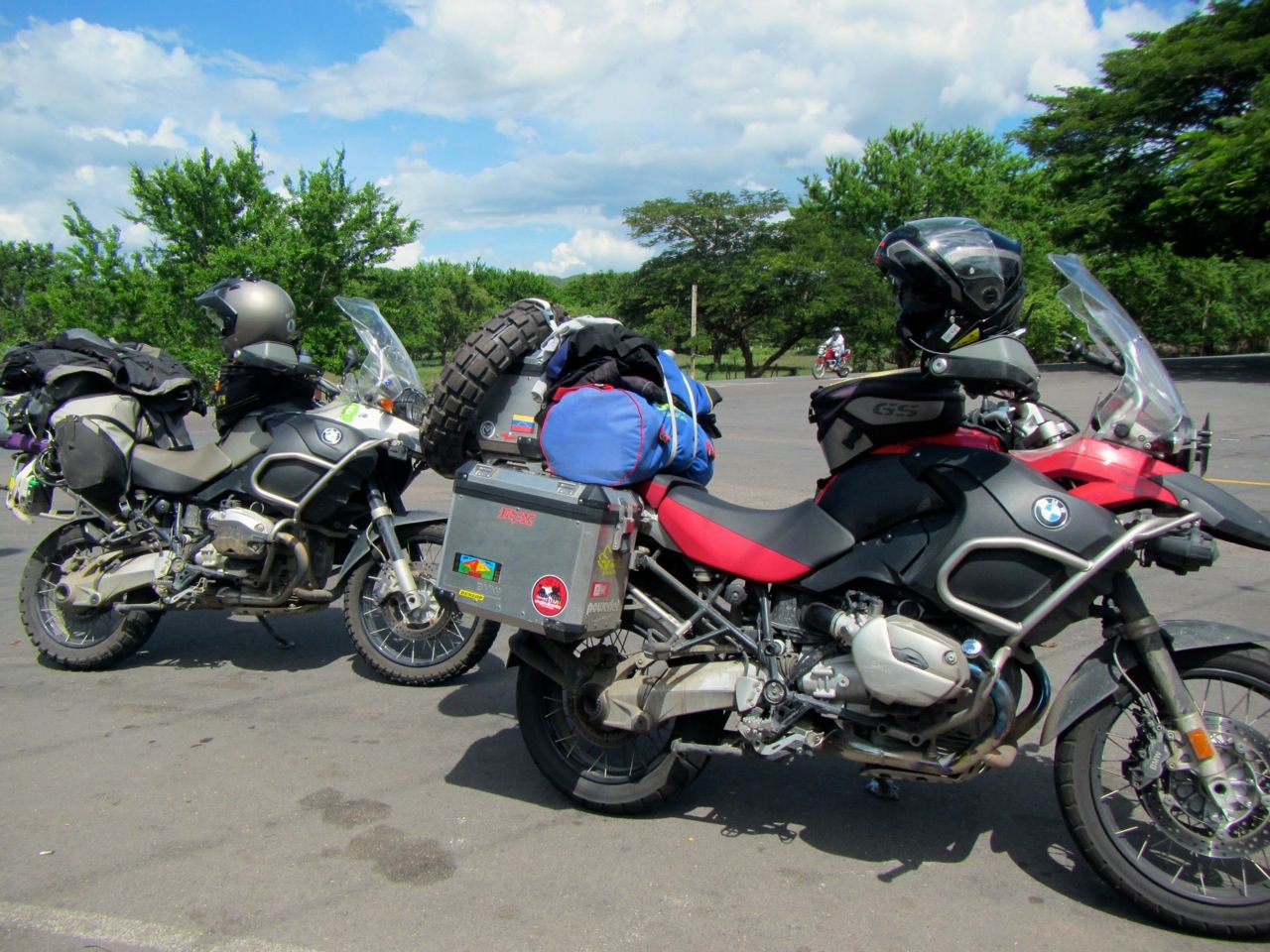
To most I am probably painfully slow and I like to stop to take photos and have snacks and drinks to engage with local people. On the other hand it is fun riding with another couple of bikes with the later conversations and comparison of kit on the bikes makes it all a lot more interesting.
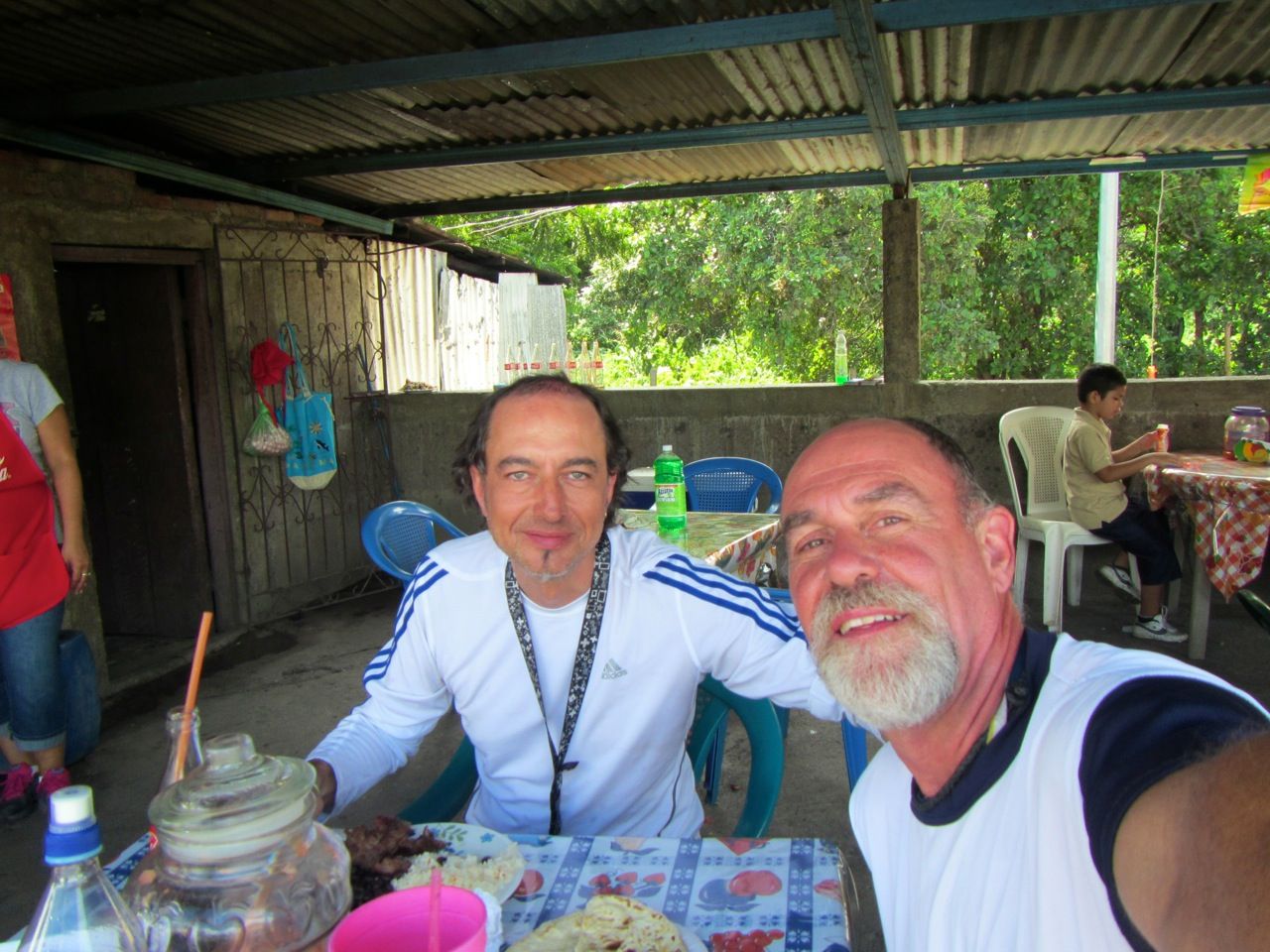
Being around other motorcycle travellers is great because we can talk more technically about the bikes rather than the same barrage of questions from non-riders about the size, the speed etc.


We passed through Leon and continued to Las Penitas where we all stayed in the Bigfoot Hostel on the beach. With private rooms at $10 a night I passed on the $3.50 dorms and enjoyed a nice comfortable queen-sized bed. It was a younger hostel but we connected with a bunch of people there and had a good night and morning. I got lots of practice with my Spanish, the guys got some exposure to more budget travelling, rather than $25-30 a night hotels and I think they really liked it.

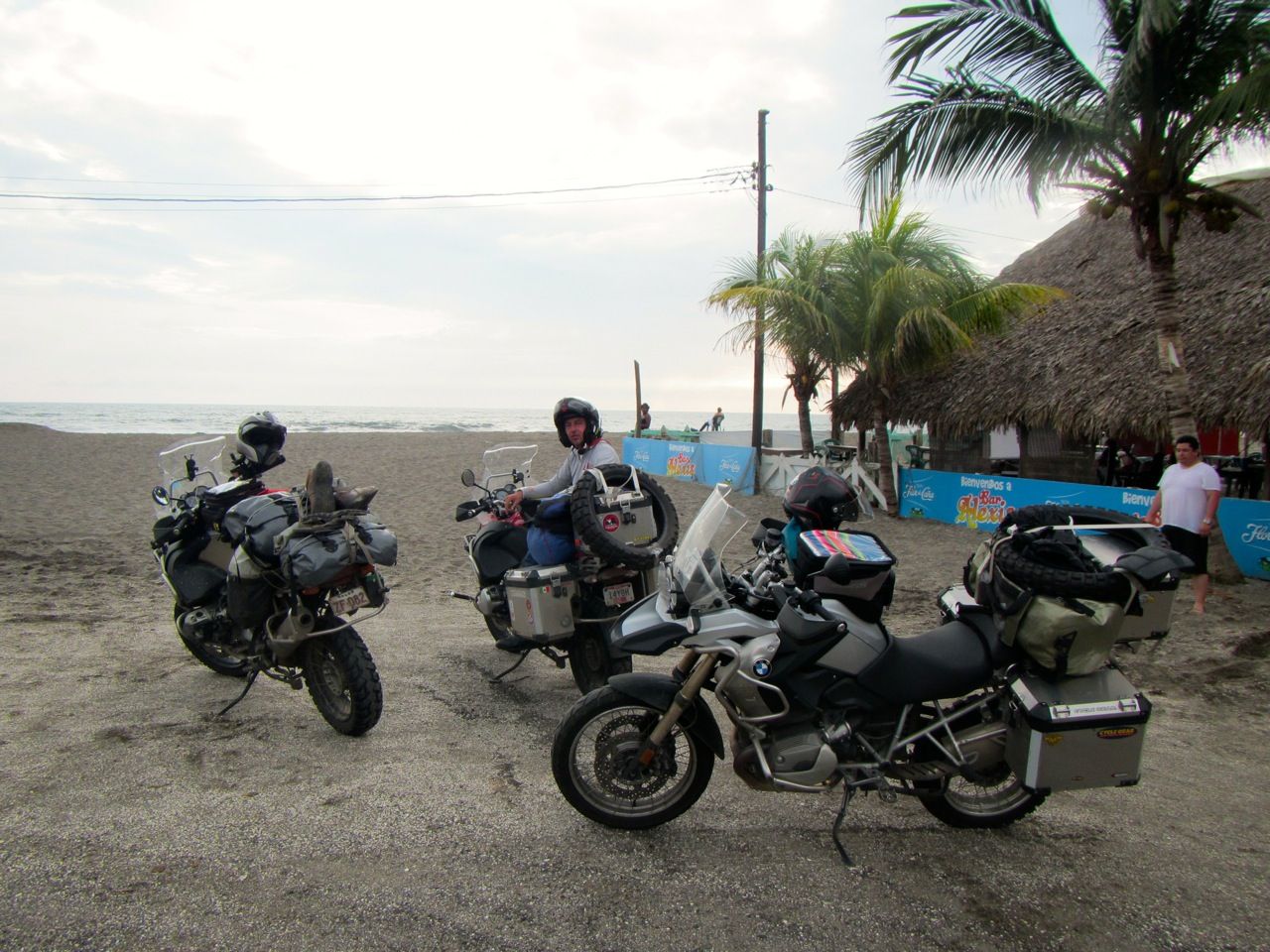


Mario generously invited me to stay with his family in Colombia over Christmas and New Years. I was planning to stay in Colombia for that period before tackling Venezuela in the new year. He was really excited to have me as a guest and I was really humbled again to have such an invitation. Another ‘chance’ meeting, another generous gesture and another opportunity to spend a special festive time with a local family.
Walter was concerned that I planned to cross Venezuela by myself especially with the current political and economic situation. He said solo it was dangerous but if I was with locals I would be fine. He and Mario agreed to escort me across Venezuela in January. They are always keen to travel and are happy to take a couple of weeks to ride with me to Brazil on the southern border of Venezuela, the only option I have of entering Guyana. I was amazed, humbled, excited. As much as I travel by intuition and expect things just to work out, I still get floored when such big things happen from what was a chance meeting. If I had found the road detouring around Tegucigalpa in Honduras, I never would have met them. You can’t plan for that.
It was sad to say farewell the next morning. Despite our language challenges we had bonded as motorcycle travellers and we ensured we had all the contact details.


They headed off and I settled back for a couple of days of relaxation by the beach in a new country. There were not so many people staying at the hostel but it was a daytrip destination for a lot of people from Leon, so the numbers ebbed and flowed.
|

8 May 2015
|
|
Gold Member
Veteran HUBBer
|
|
Join Date: Aug 2012
Location: Sunshine Coast, Queensland Australia
Posts: 241
|
|
|
Nicaragua - Leon
After three nights at the hostel in Las Penitas, I headed the short 30kms or so to Leon where after an hour of riding in the midday heat looking for a place with parking, I chanced across a nice friendly and homely hostel with dorms for $5 a night. Only one other person was there and it was Koichi, the Japanese cyclist I had met in San Salvador where we were the only two sharing a dorm there too. It was funny he had arrived in Leon before me.


On my second afternoon at the hostel I went to my Pacsafe security safe that was cabled and locked to the underneath of my bed and out of sight. I discovered that there was a hole in the bag and when I opened it my waist pouch with all of my credit cards and cash was gone. I’ve been robbed!


What a horrible sinking feeling. I had just been to the bank yesterday to get out $6000 Córdoba (US$240) and had my stash of US$1 and $5 notes, another US$100 in twenties and tens and $75 worth of Honduran Lempiras I hadn’t yet changed.
I discovered it must have been 24 hours ago because my cards had been used and over $1600 spent up at a number of stores. Fortunately they were not interested in passports which were still there.
I advised the owners and the police were called and a report taken. Long story short, one of the cleaners had been suspected for some time of petty theft and we think she worked with accomplices, letting them in to take the things while everyone in the hostel was distracted. Koichi also had three credit cards taken. This started a process of whodunit, when and how. I was feeling quite gutted, picturing exactly what was where in the pouch but quickly came to terms with the fact it was gone and not coming back. I did the usual cancelling of cards and contacting insurance, a process that took that evening and half of the next day. Leon, Nicaragua had made its mark.
The owner of the hostel offered me free accommodation for the rest of the time I wanted to stay which was a very kind gesture. He sacked the cleaner, changed all the locks and really did all he could to respond to the situation. Getting cards sent to Central America was not going to be easy but the bank assured me it would take 10-14 working days.
I stayed for another four days, making sure I had ticked all the boxes I needed to do for replacement and insurance. I was trying to stay positive but there were moments where I felt a bit naked and violated and I guess I was at a low ebb after a few days. In the meantime there were festivals to watch and a city to explore.

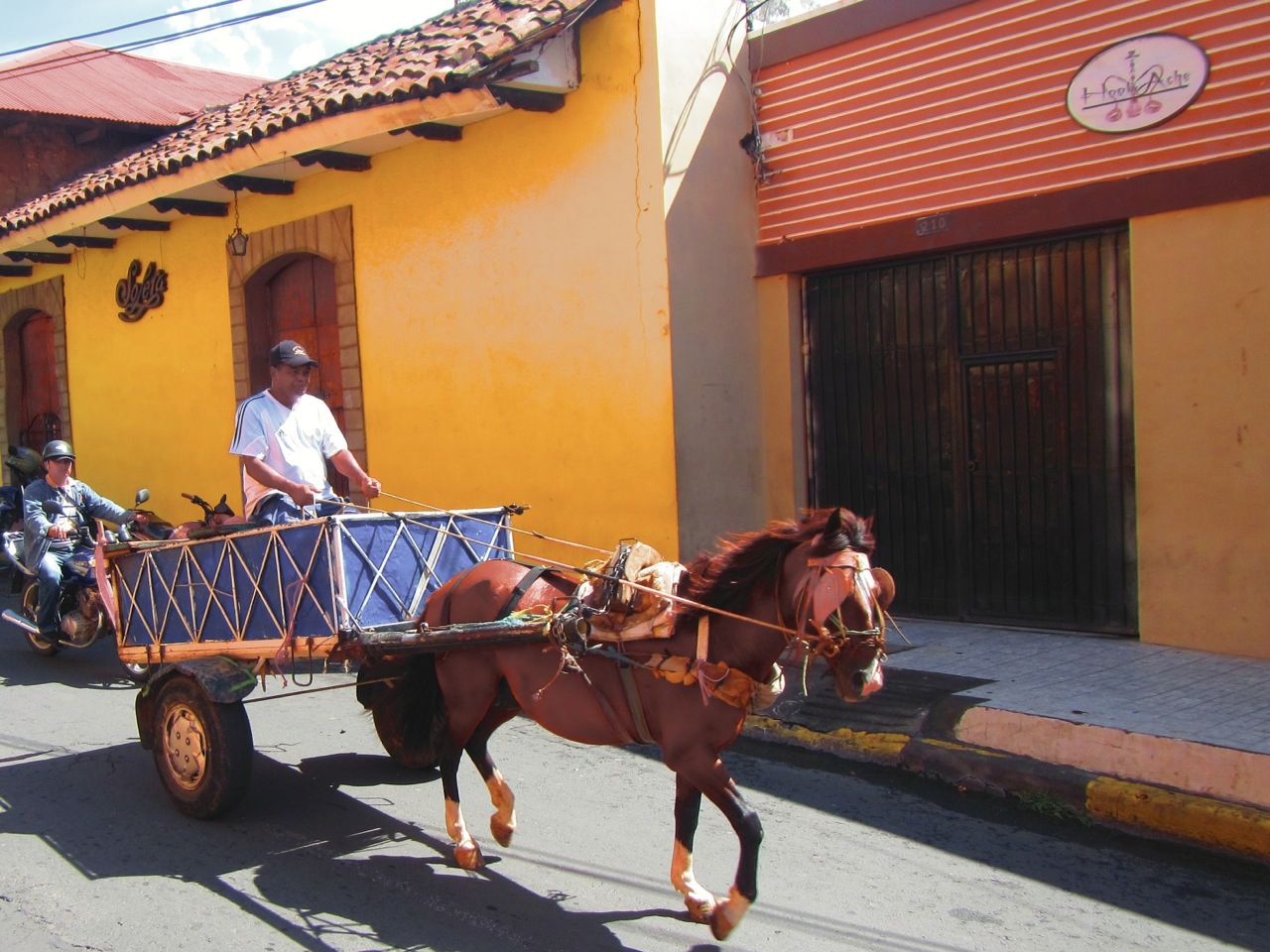






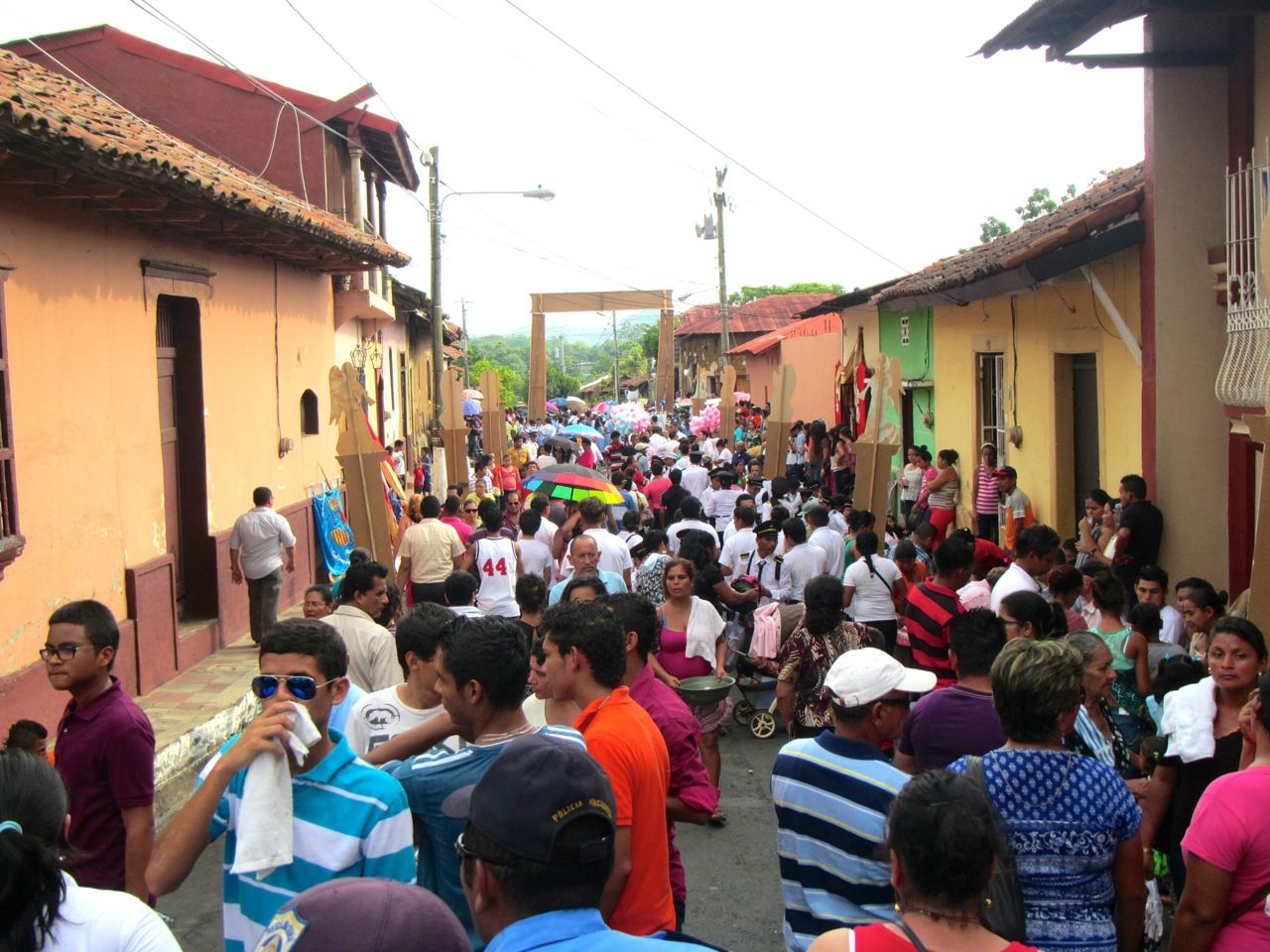
I knew I had to move on and get my travelling vibe back. Fortunately I had some reserved stash of cash in other places so I wasn’t destitute but had to stretch it out for a few days. My friends I had met at the beach, Grant and Kimberley, came and stayed at the hostel and kindly used their PayPal account to help me access money which made me feel better, knowing I had enough cash to last for a couple of weeks.
Everything happens for a reason, right, so I guess I can be grateful that I didn’t lose my passport, or my bike, or get any injuries from something else. But that still didn’t stop me from going through some emotions, feeling angry, suspicious of people, protective of the rest of my gear and some low times. I allowed it to happen and gave myself permission to feel these feelings. Maybe it was a balance to the amazing high I’ve been on for the last month or more and of course I have seen generosity and assistance from people along the way. Lessons learned as well!
|

8 May 2015
|
|
Gold Member
Veteran HUBBer
|
|
Join Date: Aug 2012
Location: Sunshine Coast, Queensland Australia
Posts: 241
|
|
|
Nicaragua - Meeting of Travellers
I made contact with my motorcycle traveller friend Martin Brucker who was heading north from Panama after some repairs to his bike. Martin and I met on the Stahlratte returning from Cuba where he had spent two months with his BMW 650 X-Challenge. He has been travelling solo for 4½ years, the last year in South and Central America, and before that Australia and Africa. He is a genuine adventurer who travels off the beaten track regularly, opting for the back roads, dirt roads, tracks and small villages in preference to the black highways. It was great to hang out with him and listen to his stories and experiences, sharing some of my own.


It certainly gives you a different perspective on life travelling for such a long time. He is still as enthusiastic as ever and has plans for the next year up to the US and Alaska with no signs of slowing down. It makes my now eight months feel just like a holiday in comparison, but there will always be people that have travelled for longer. We talked about the other riders we have met travelling. It’s like an update of who is where, what places to stay, good routes, exchanging contacts and road reports of countries. I’m heading south and he is heading north so we both had lots to share on these subjects and more. Spending some time with people like Martin enrich the journey immensely and helps to make you feel part of a bigger community of like-minded people. It also connects us on an individual level. Meeting people for the second, third time or more reinforces friendships and trust. You have a shared history on the journey and these connections will continue for life and all over the world.
We met in an interesting town called Masaya with a novel, very tall coffee table and four chairs in the main square,

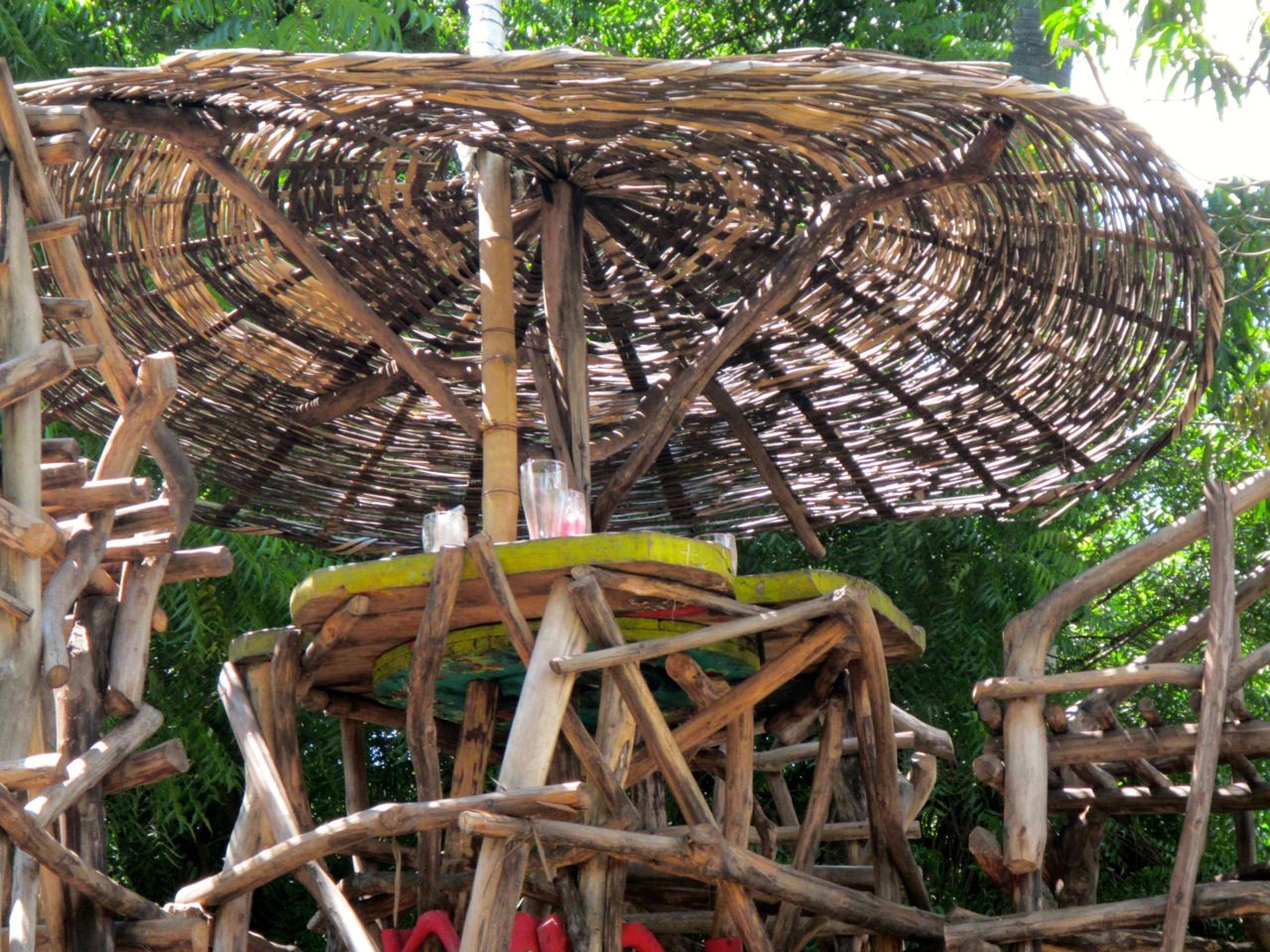
then rode out to a hostel I had found online called The Peace Project.

They had a bunch of programs running with local kids in a very interesting piece-meal house near the edge of Apoyo Lagoon.



The delivery didn’t seem to really add up to the promise, but it was friendly and cheap and staying contributed to the project. Martin and I shared a family room.
Incredibly he celebrated 4.5 years on the road so we celebrated in small style…single beds, one  , early night.

We talked more about our journeys, with Martin having many more countries and stories to share. We stayed three nights and after the second night I walked out the front of the hostel and there was another BMW 650 Dakar parked across the road with the telltale travel gear. I walked out for a closer look and it had an Australian plate from Victoria. Walking up from the lake was Paolo Pastore (Adventure Before Dementia), an Italian rider who had bought the bike in Australia, and had been travelling on it for four years.
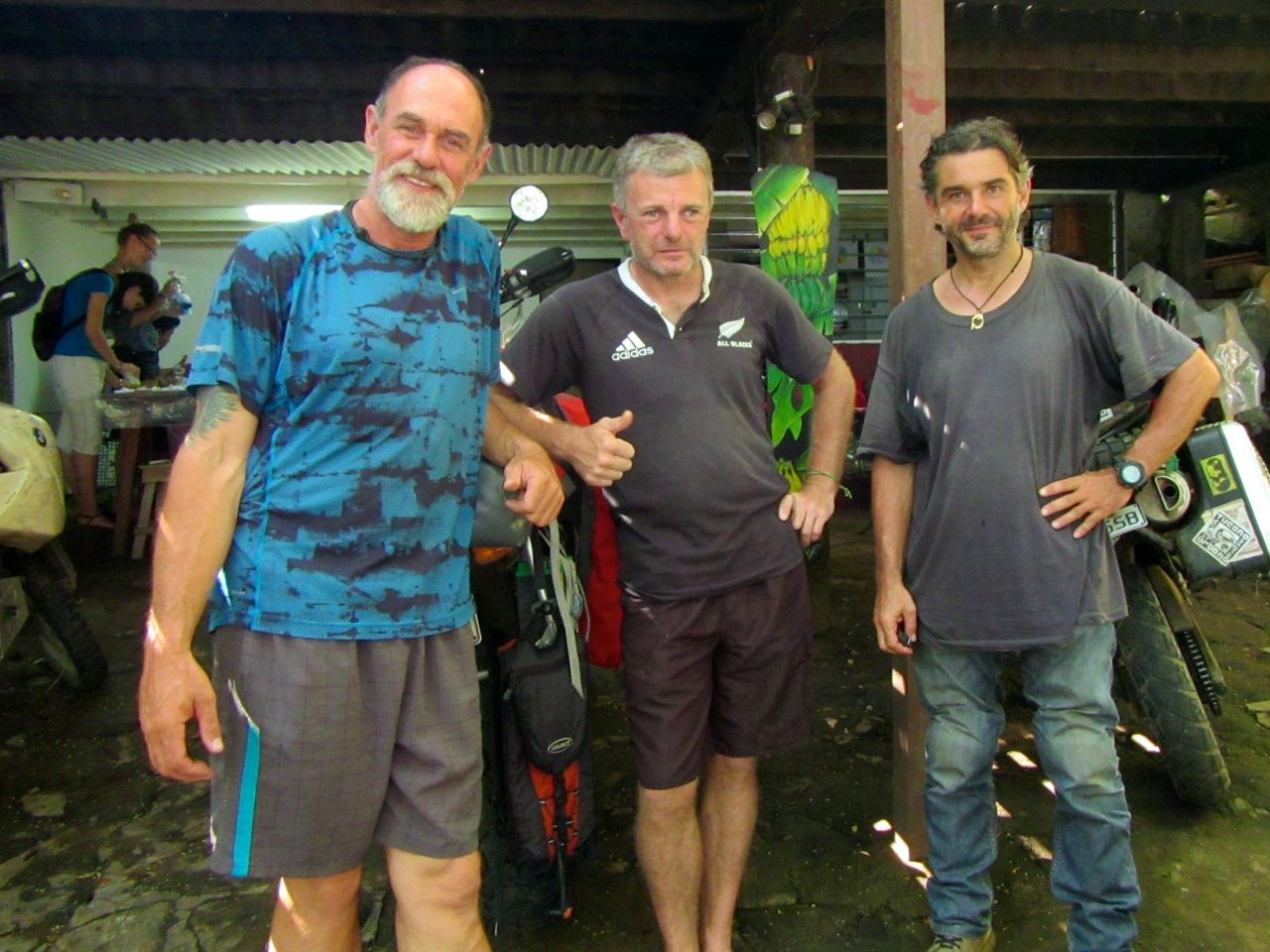

He came and joined us and he and Martin could have been twins. Same height, same build, similar bikes with similar mileage, similar time travelling and similar travelling ethos.

Paolo stayed a night and the stories became three-way. He was also travelling north so I’m sure they will cross paths again. We left together in the morning and rode to Masaya again for some photos and as a takeoff point.


We even found an interesting trailer to attach to Martin's bike.

It was a great meeting of three solo travellers and I in particular learned a lot listening to these seasoned adventurers.
|

8 May 2015
|
|
Gold Member
Veteran HUBBer
|
|
Join Date: Aug 2012
Location: Sunshine Coast, Queensland Australia
Posts: 241
|
|
|
Nicaragua - Ometepe Island, Lake Nicaragua
I travelled south for about one hundred kilometres to the town of Rivas and located the ferry port for my trip to Ometepe Island in Lake Nicaragua, bought my ticket and loaded up. I thought it was nice that the ferry matched my Che sticker!

Ometepe is a small island that has two volcanoes, one active and one dormant.

Martin had stayed there with a British couple, Jim and Caroline, riding two identical Husqvarna 650s.

Caroline was recovering from a broken lower leg after she fell from her bike on their second day on the island.
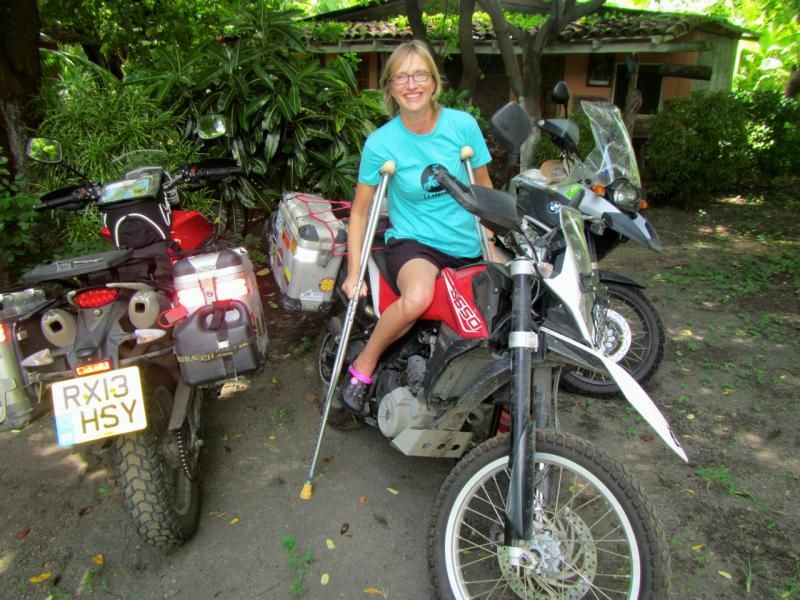
I joined them at a small hotel resort called Santa Martha where I was given the pre-negotiated price of $15 a night for a lovely comfortable room near the water.


The sound of small waves lapping on the shore was punctuated with bird calls, periodic staff music and the daily storm.

Jim and Caroline were welcoming and chuffed to have another visitor. She had been in a plaster cast for six weeks and recently had it removed so was starting to walk and do physio on her frozen right ankle. They have been travelling for ten months through South America heading south to north so we swapped lots of ‘places to see’ information. During my four night stay I unloaded Ziggy and did a figure eight loop of the two volcanoes.
Jim joined me for the bigger paved island with a bit of gravel and we explored some of the small towns.


A church being renovated
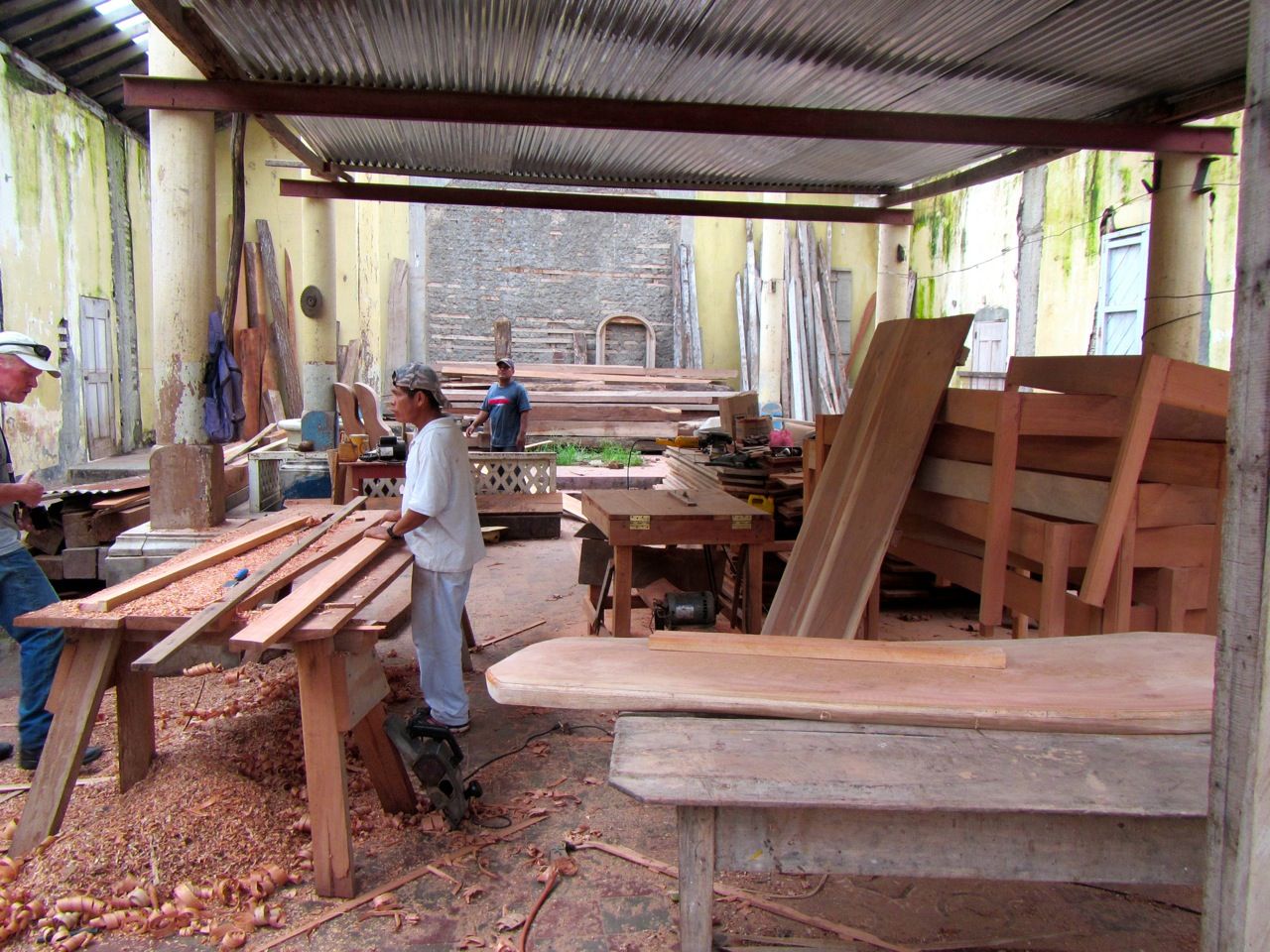

and village life






Jim didn't feel up to the tougher south island so I did it alone and he returned to the hotel. It was 40kms of exciting riding. Mud, rocks, deep puddles, trucks, local villages.
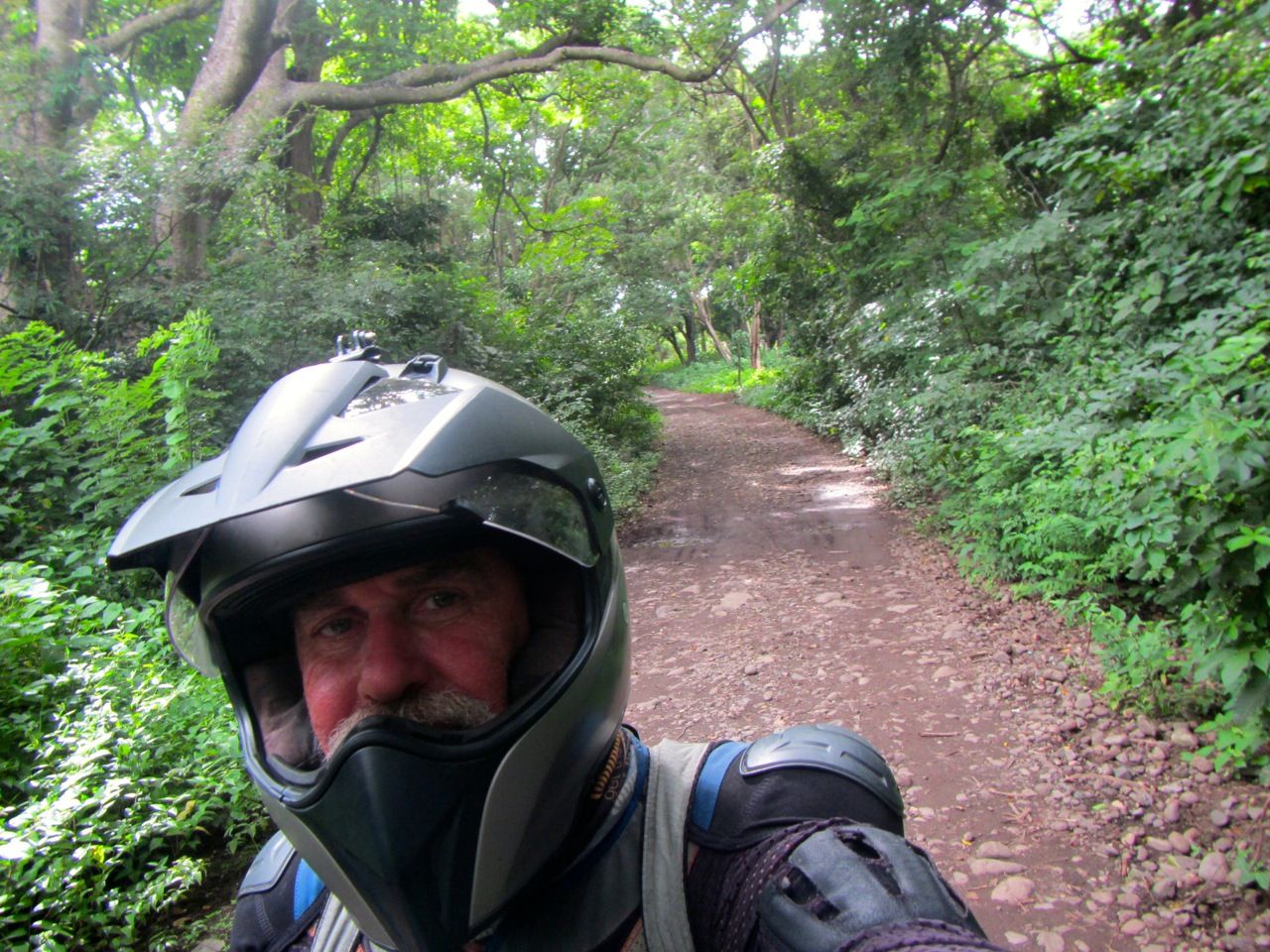




There were some quite challenging spots for me where I felt like I was climbing paths of boulders, that were wet and slippery, but Ziggy kept her footing and I kept my technique and I managed the whole island without a fall. Of course those tougher areas I didn't get photos of. Skills have definitely improved! I arrived back tired but satisfied with a fun day’s riding.

A couple of days relaxing by the lake.




Time again to move on so we made our farewells and Jim rode with me to the ferry port. A storm came in when I was on the ferry and it bucketed down. 

I don’t know if I can count that as raining while I am riding, but I still seem to have this gift of the rain starting when I get off the bike and stopping when I get on. After a full drenching on the ferry, the clouds cleared as the ferry berthed and I rode carefully off the slippery deck. As I was exiting the port I came across a loaded KTM 1190 and met Fernando and Almu riding two-up around the world.
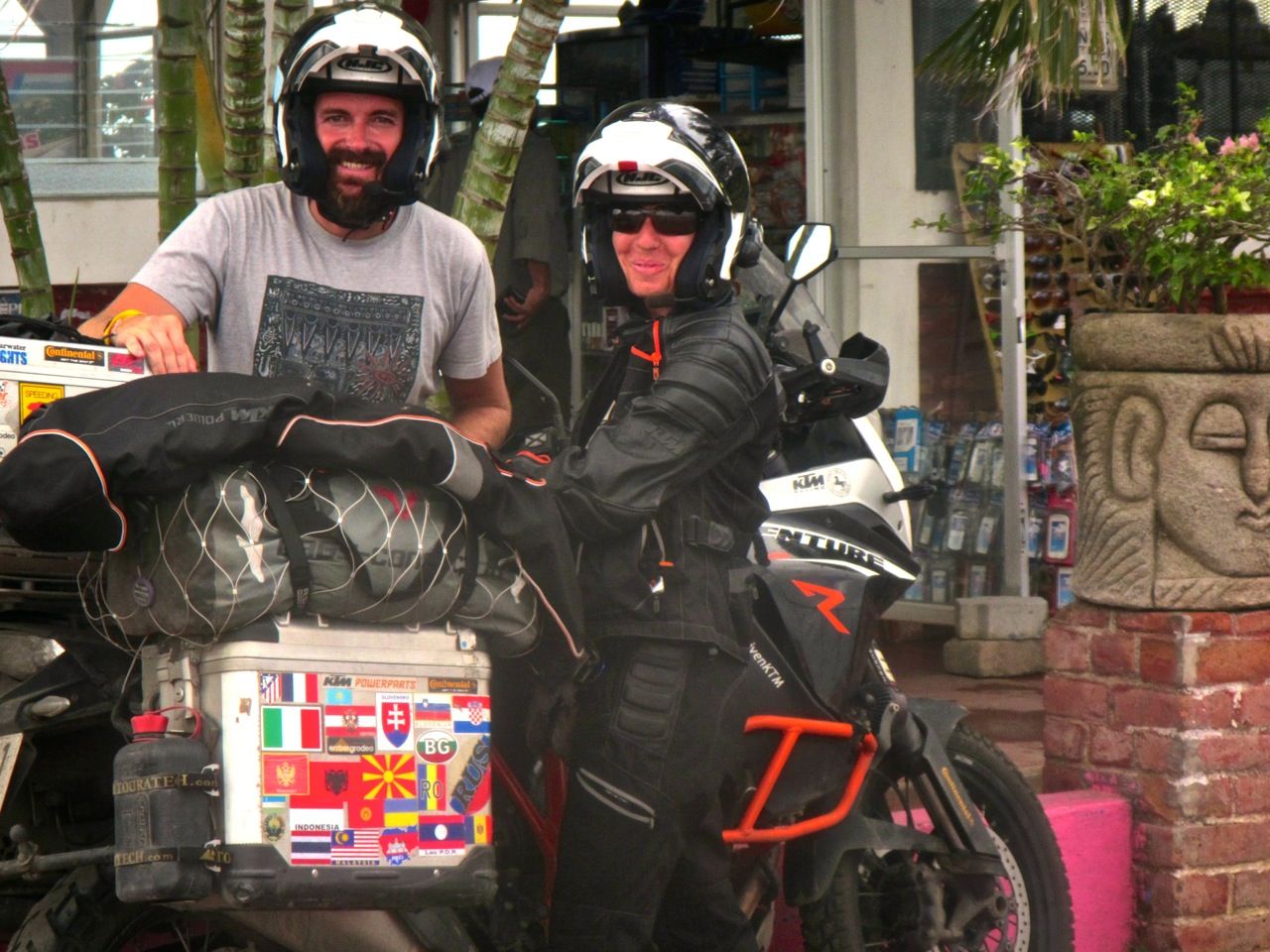
We talked and swapped details, they too are travelling south but as I am finding, much faster than I am. Also they are taking the west coast to get down to Argentina for the start of the 2015 Dakar Rally.
|
|
Currently Active Users Viewing This Thread: 2 (0 Registered Users and/or Members and 2 guests)
|
|
|
 Posting Rules
Posting Rules
|
You may not post new threads
You may not post replies
You may not post attachments
You may not edit your posts
HTML code is Off
|
|
|
|

Check the RAW segments; Grant, your HU host is on every month!
Episodes below to listen to while you, err, pretend to do something or other...

2020 Edition of Chris Scott's Adventure Motorcycling Handbook.
"Ultimate global guide for red-blooded bikers planning overseas exploration. Covers choice & preparation of best bike, shipping overseas, baggage design, riding techniques, travel health, visas, documentation, safety and useful addresses." Recommended. (Grant)

Led by special operations veterans, Stanford Medicine affiliated physicians, paramedics and other travel experts, Ripcord is perfect for adventure seekers, climbers, skiers, sports enthusiasts, hunters, international travelers, humanitarian efforts, expeditions and more.
Ripcord Rescue Travel Insurance™ combines into a single integrated program the best evacuation and rescue with the premier travel insurance coverages designed for adventurers and travel is covered on motorcycles of all sizes.
(ONLY US RESIDENTS and currently has a limit of 60 days.)
Ripcord Evacuation Insurance is available for ALL nationalities.
What others say about HU...
"This site is the BIBLE for international bike travelers." Greg, Australia
"Thank you! The web site, The travels, The insight, The inspiration, Everything, just thanks." Colin, UK
"My friend and I are planning a trip from Singapore to England... We found (the HU) site invaluable as an aid to planning and have based a lot of our purchases (bikes, riding gear, etc.) on what we have learned from this site." Phil, Australia
"I for one always had an adventurous spirit, but you and Susan lit the fire for my trip and I'll be forever grateful for what you two do to inspire others to just do it." Brent, USA
"Your website is a mecca of valuable information and the (video) series is informative, entertaining, and inspiring!" Jennifer, Canada
"Your worldwide organisation and events are the Go To places to for all serious touring and aspiring touring bikers." Trevor, South Africa
"This is the answer to all my questions." Haydn, Australia
"Keep going the excellent work you are doing for Horizons Unlimited - I love it!" Thomas, Germany
Lots more comments here!

Every book a diary
Every chapter a day
Every day a journey
Refreshingly honest and compelling tales: the hights and lows of a life on the road. Solo, unsupported, budget journeys of discovery.
Authentic, engaging and evocative travel memoirs, overland, around the world and through life.
All 8 books available from the author or as eBooks and audio books
Back Road Map Books and Backroad GPS Maps for all of Canada - a must have!
New to Horizons Unlimited?
New to motorcycle travelling? New to the HU site? Confused? Too many options? It's really very simple - just 4 easy steps!
Horizons Unlimited was founded in 1997 by Grant and Susan Johnson following their journey around the world on a BMW R80G/S.
 Read more about Grant & Susan's story
Read more about Grant & Susan's story
Membership - help keep us going!
Horizons Unlimited is not a big multi-national company, just two people who love motorcycle travel and have grown what started as a hobby in 1997 into a full time job (usually 8-10 hours per day and 7 days a week) and a labour of love. To keep it going and a roof over our heads, we run events all over the world with the help of volunteers; we sell inspirational and informative DVDs; we have a few selected advertisers; and we make a small amount from memberships.
You don't have to be a Member to come to an HU meeting, access the website, or ask questions on the HUBB. What you get for your membership contribution is our sincere gratitude, good karma and knowing that you're helping to keep the motorcycle travel dream alive. Contributing Members and Gold Members do get additional features on the HUBB. Here's a list of all the Member benefits on the HUBB.
|
|
|

















 36Likes
36Likes













 Heading north it was already midday and I was enjoying the scenery of a new country. In my mind’s eye I didn’t have a picture of what Honduras would look like and I was pleasantly surprised to see it was green and mountainous.
Heading north it was already midday and I was enjoying the scenery of a new country. In my mind’s eye I didn’t have a picture of what Honduras would look like and I was pleasantly surprised to see it was green and mountainous. 



































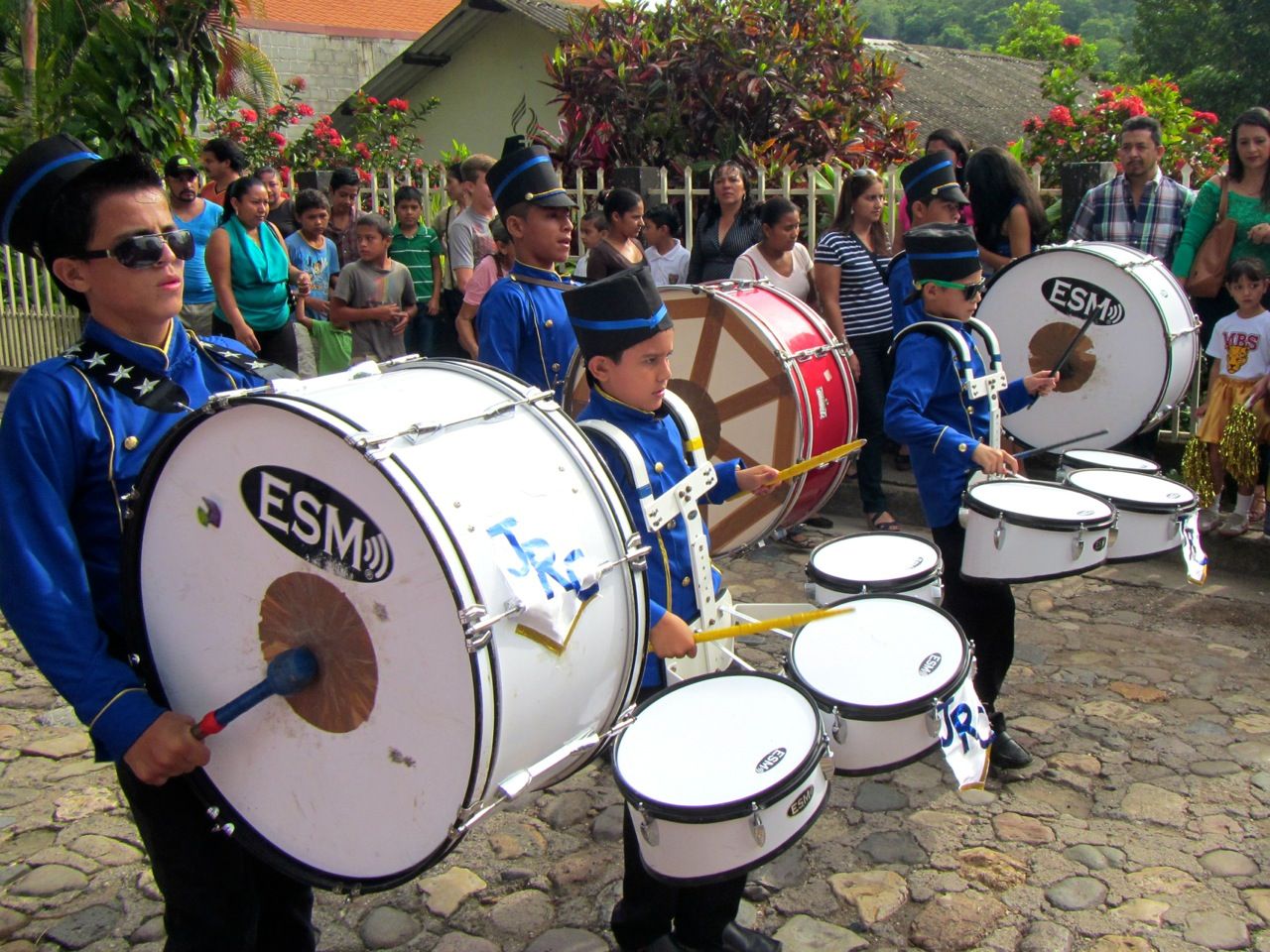




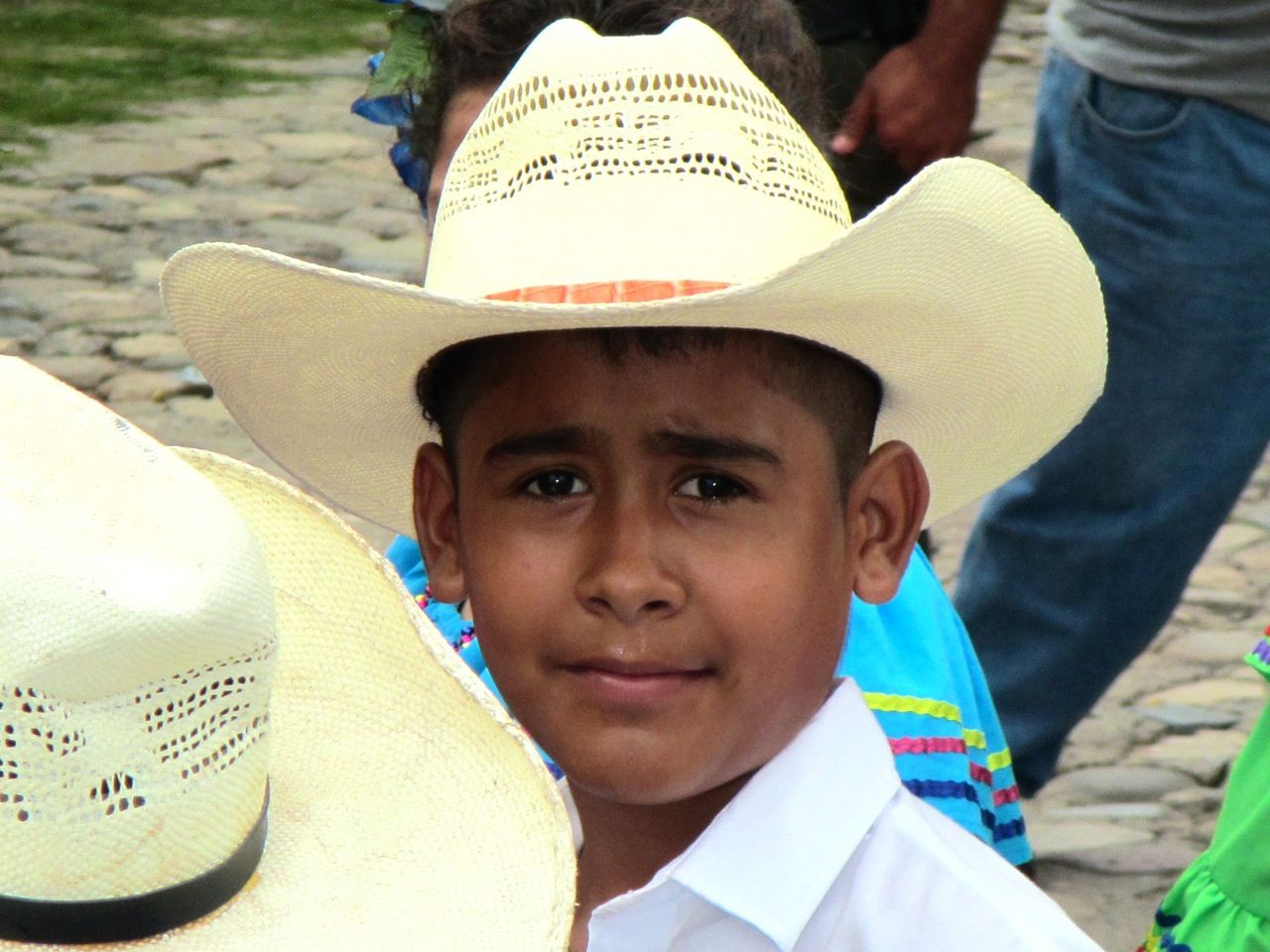



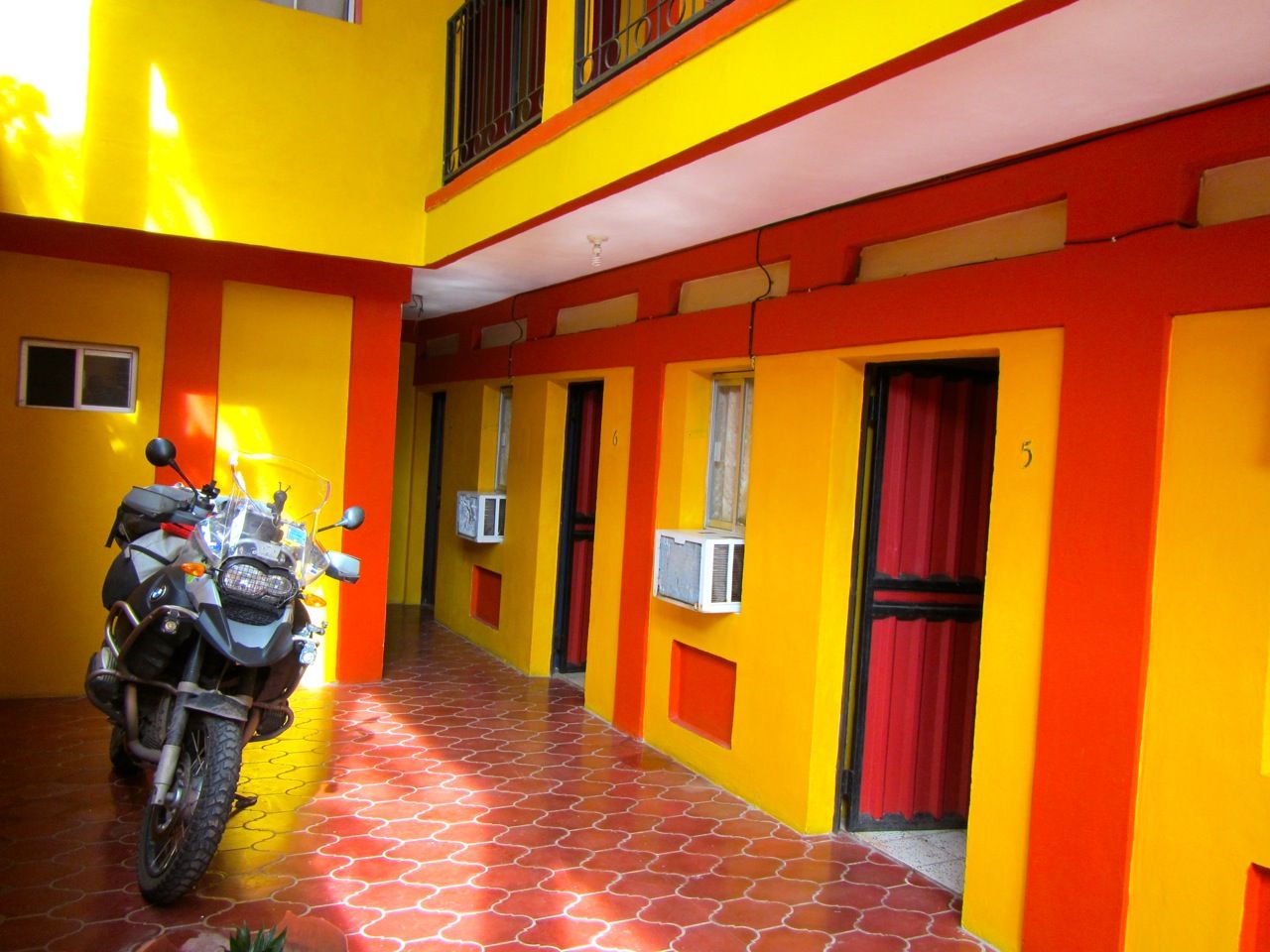

















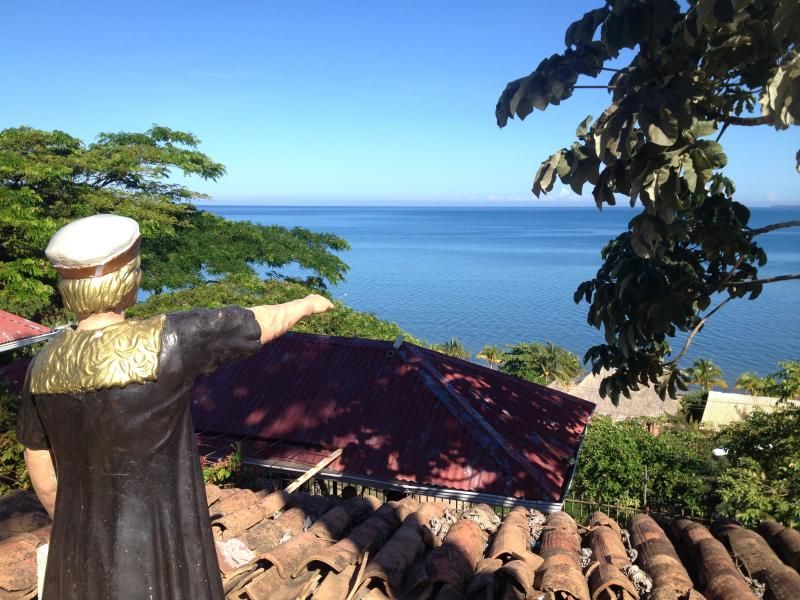
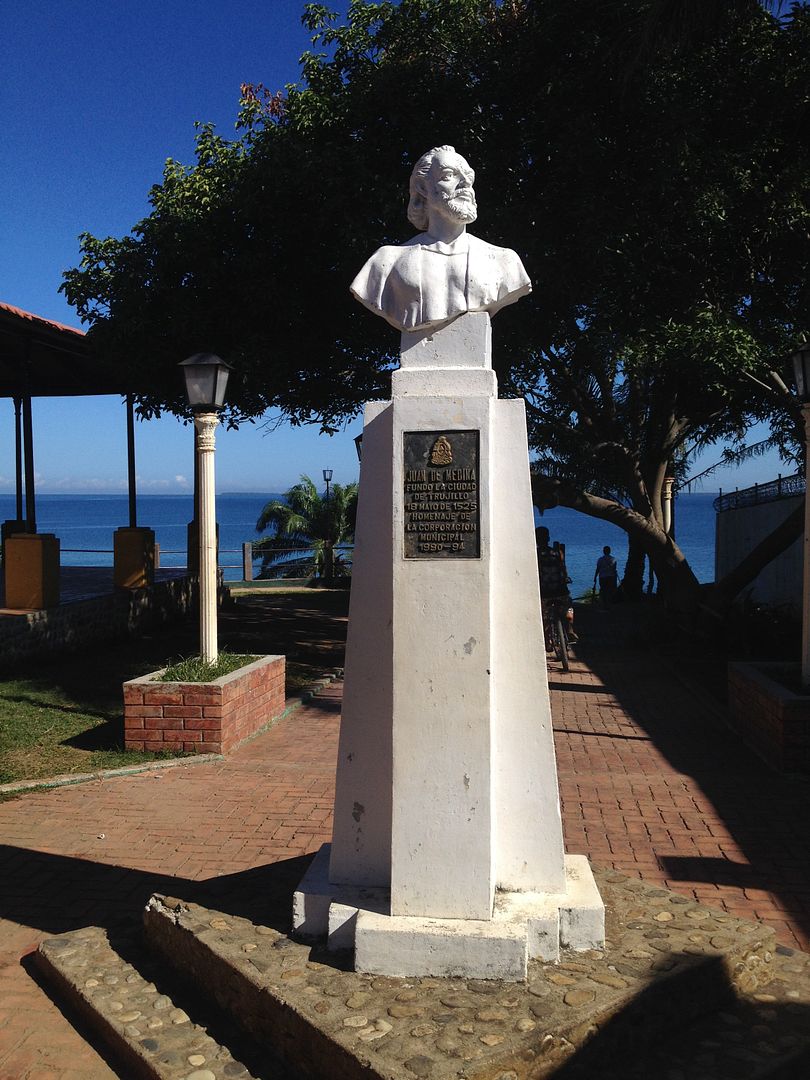

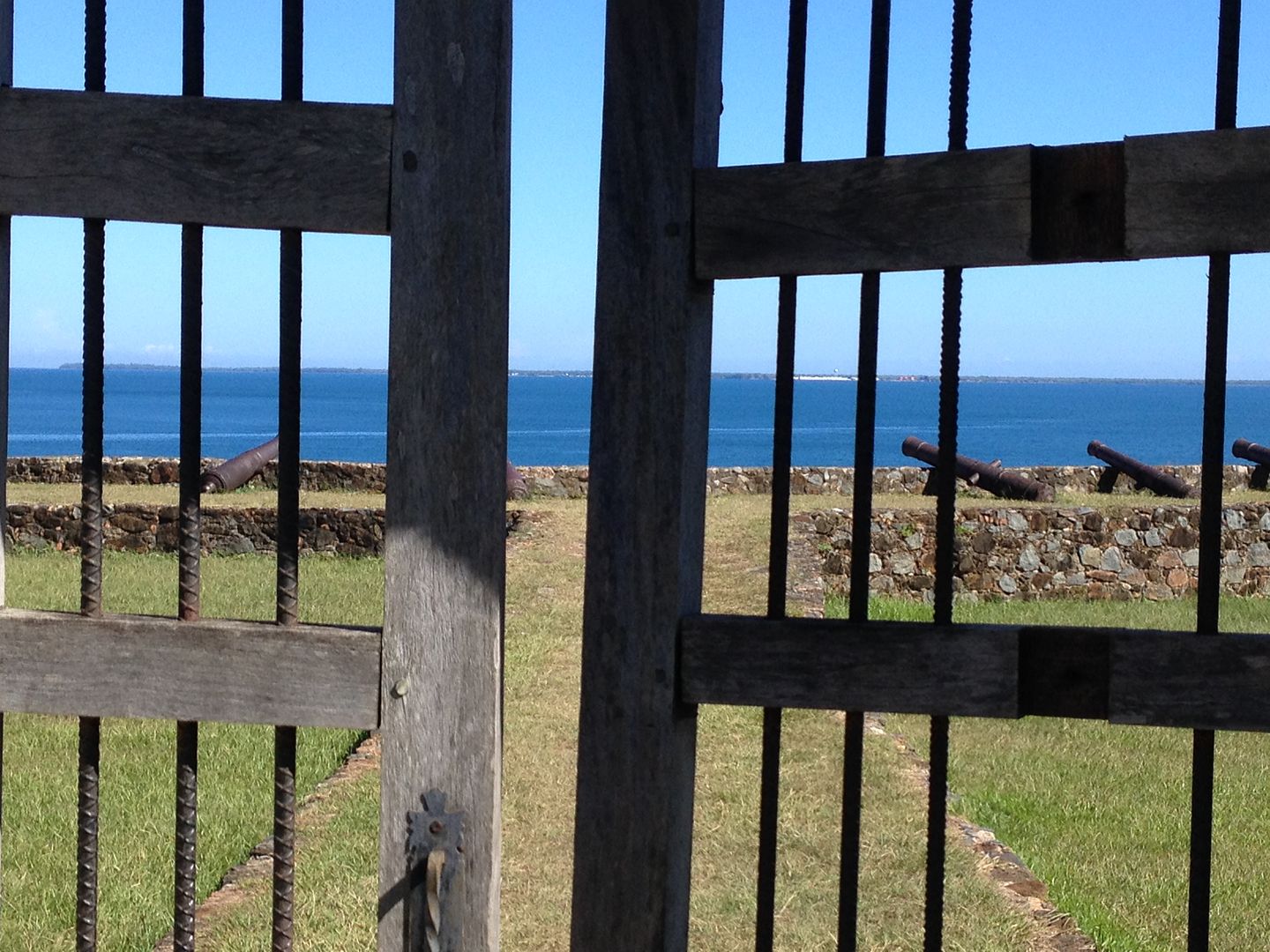





































 s to wash down the dust and soothe sore feet, muscles and insect bites. So-called Puri-Puri flies bite and leave a red blood spot on the top and several days of intense itchiness. I first encountered them in Socopó where I removed the blood clot on the top to my detriment; this action causes many days of discomfort from my thirty or so bites. Being a new insect to me I have no immunity to them but as time goes on they are less intense and I no longer remove the blood clot, and have become more vigilant about applying insect repellent.
s to wash down the dust and soothe sore feet, muscles and insect bites. So-called Puri-Puri flies bite and leave a red blood spot on the top and several days of intense itchiness. I first encountered them in Socopó where I removed the blood clot on the top to my detriment; this action causes many days of discomfort from my thirty or so bites. Being a new insect to me I have no immunity to them but as time goes on they are less intense and I no longer remove the blood clot, and have become more vigilant about applying insect repellent.















































































































 Linear Mode
Linear Mode










